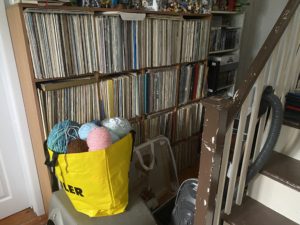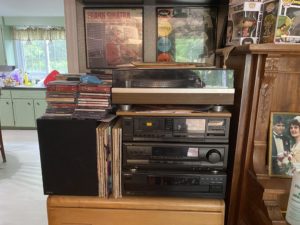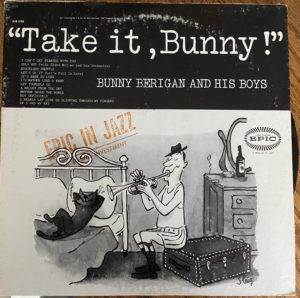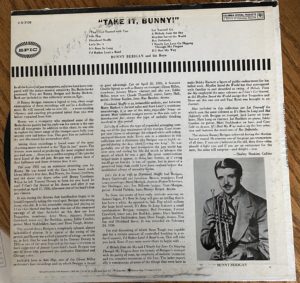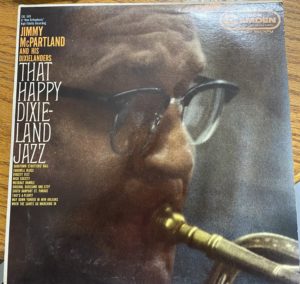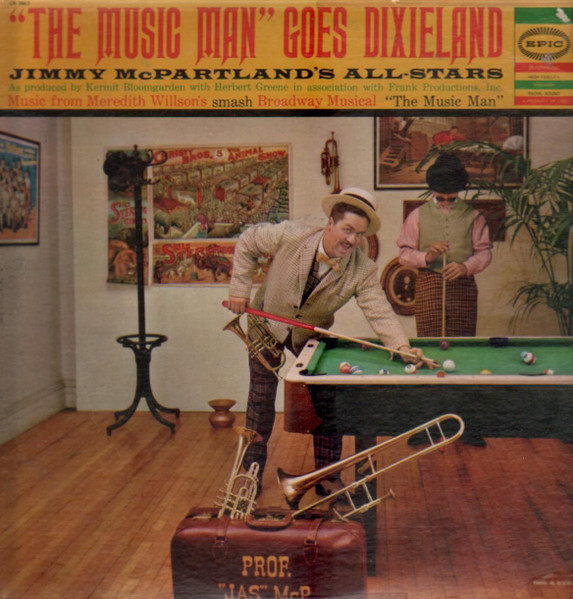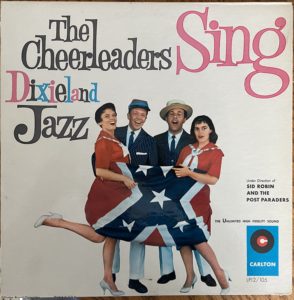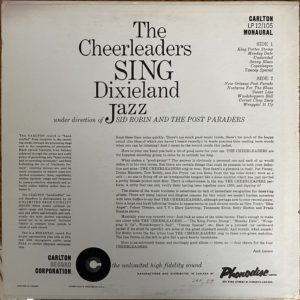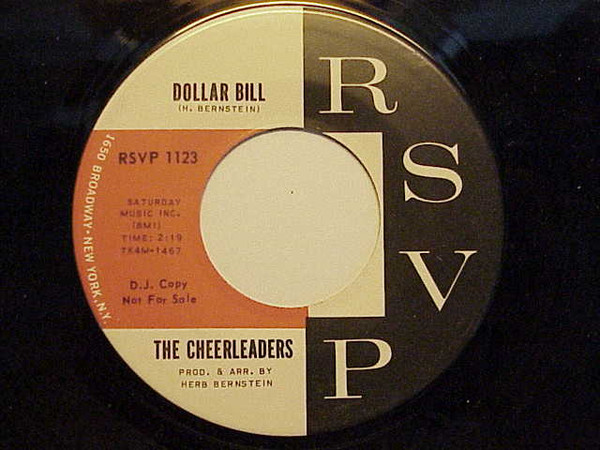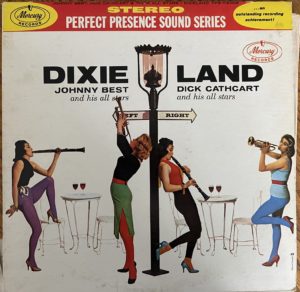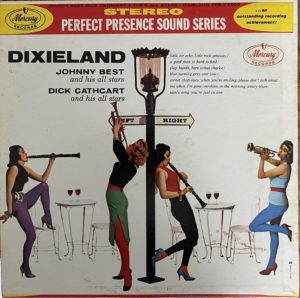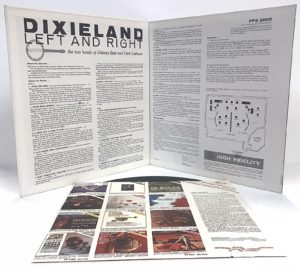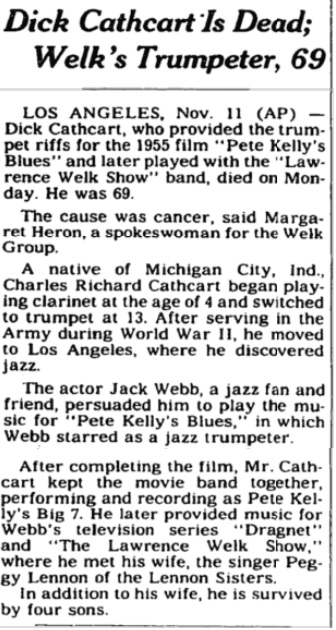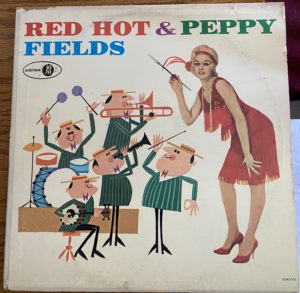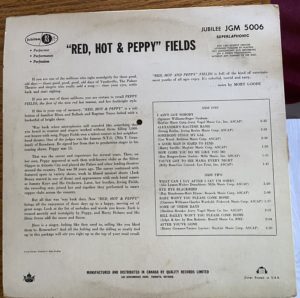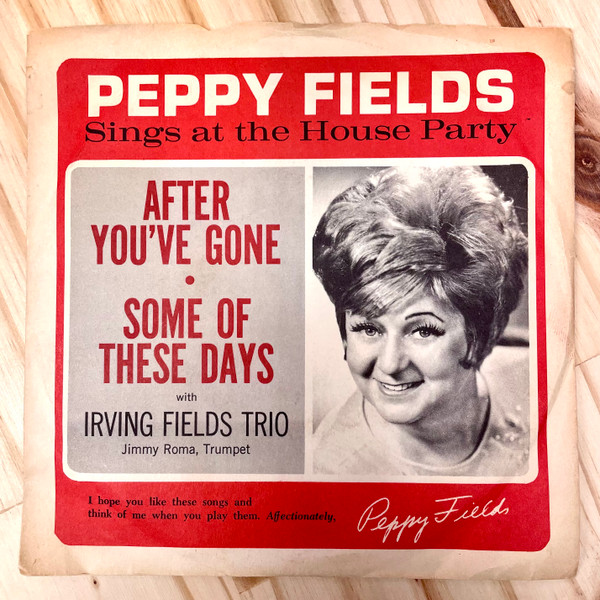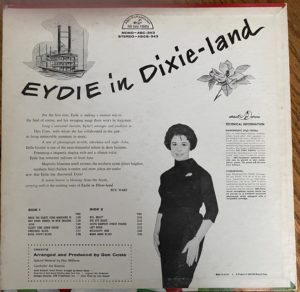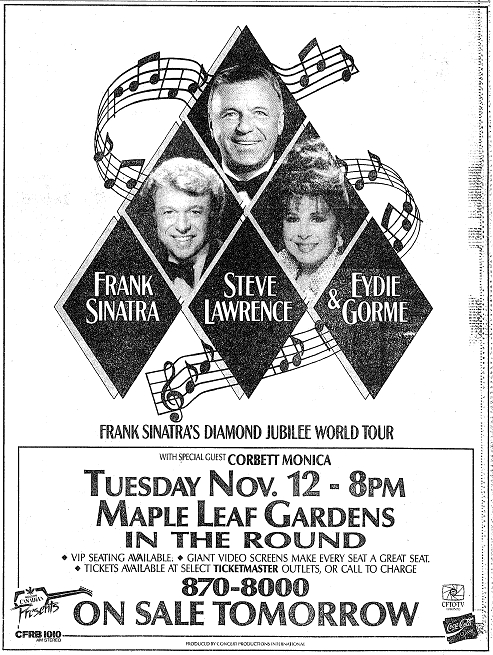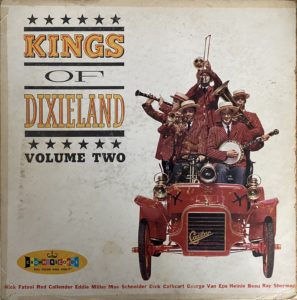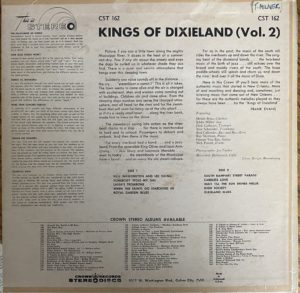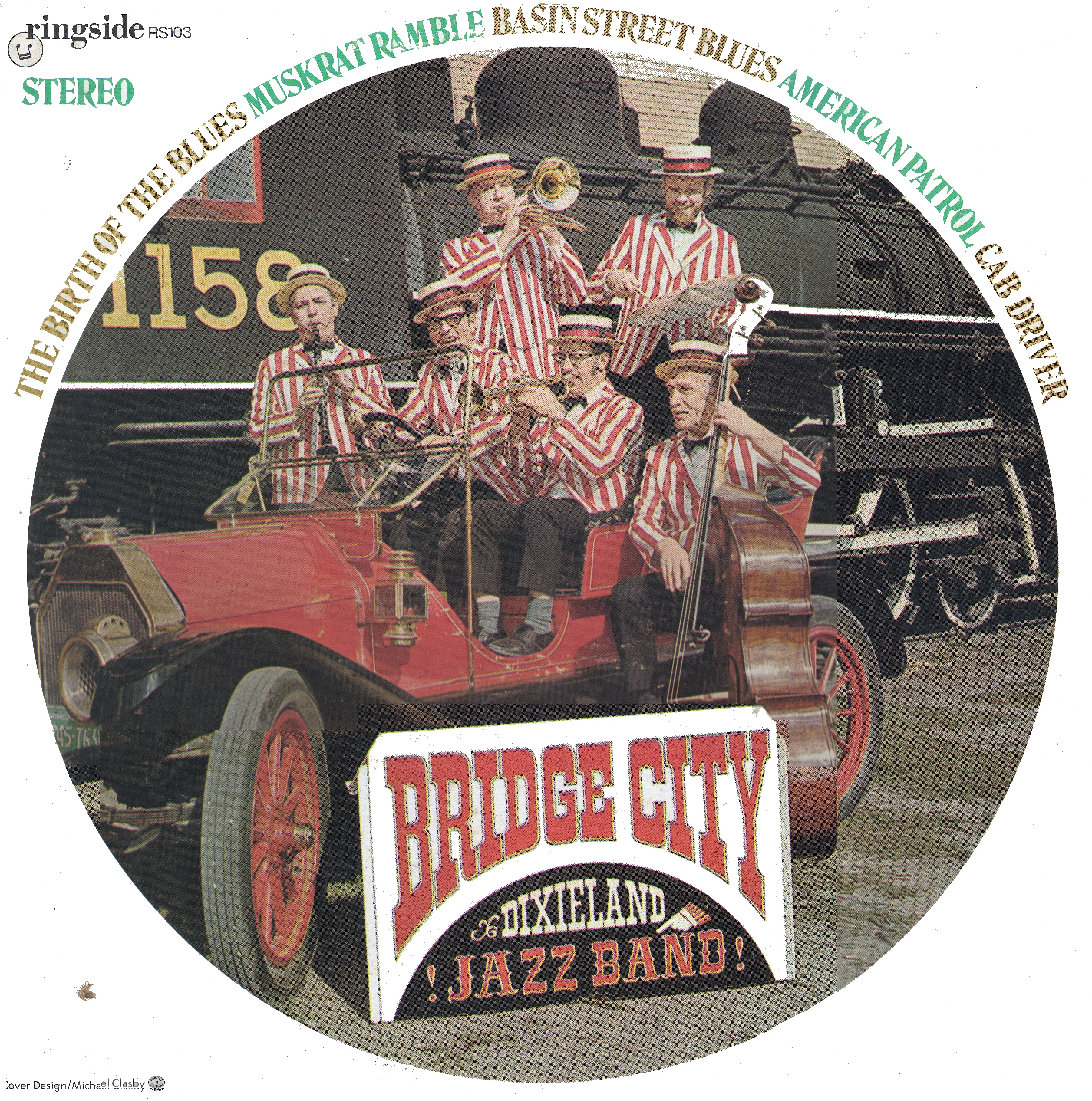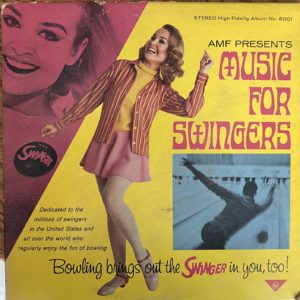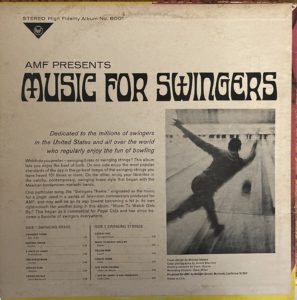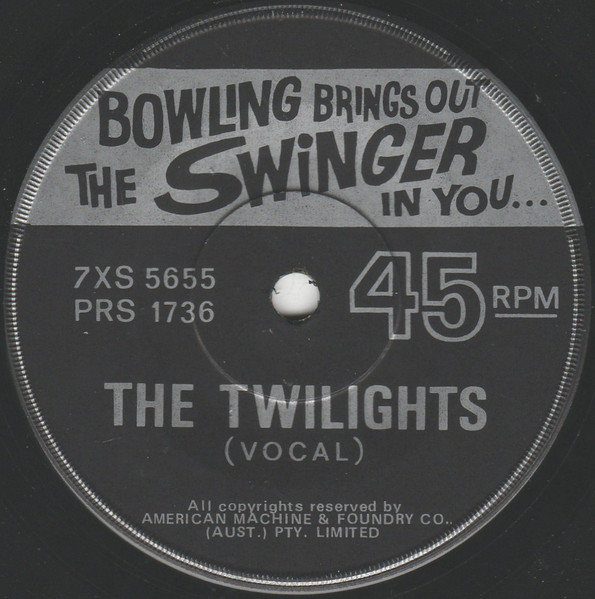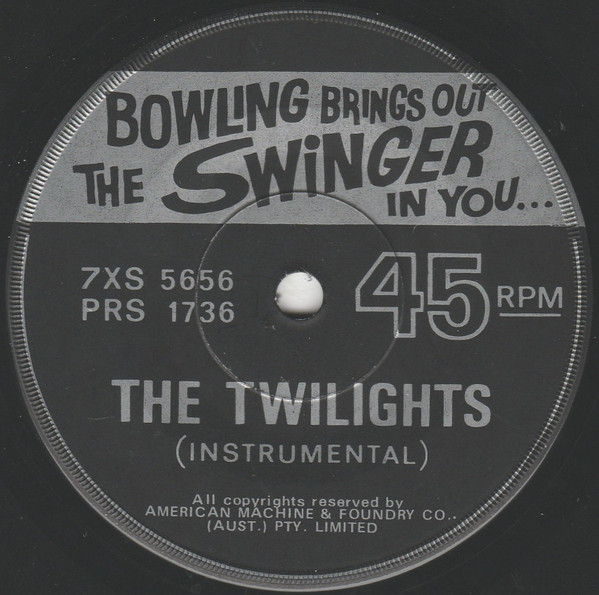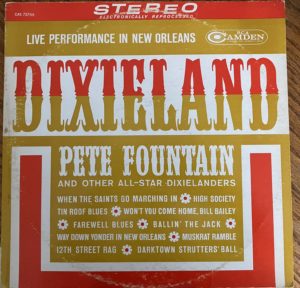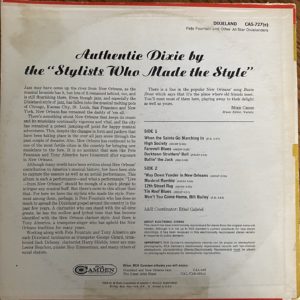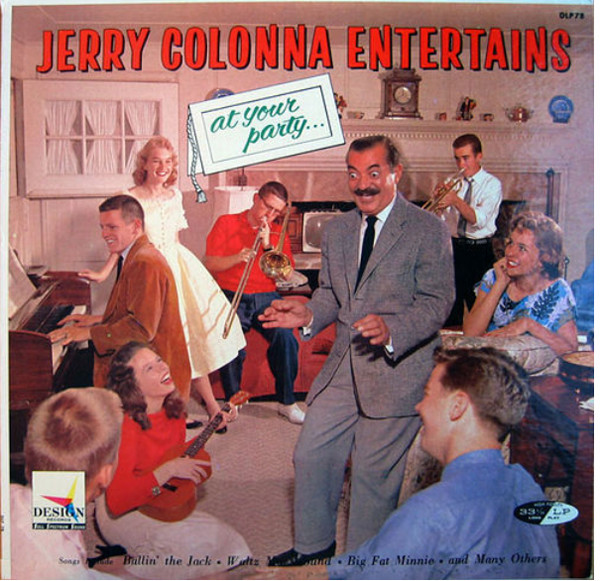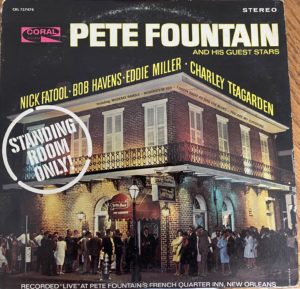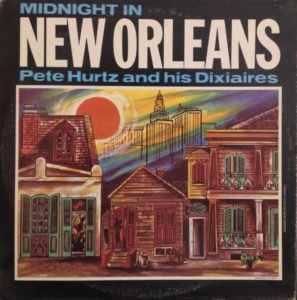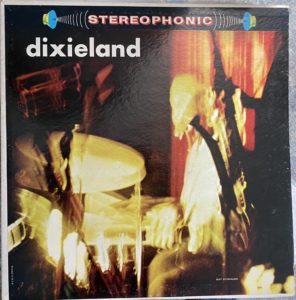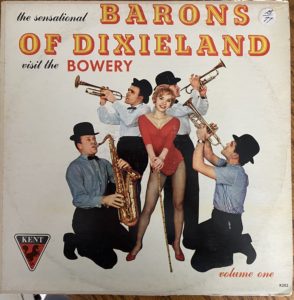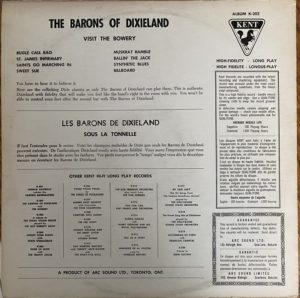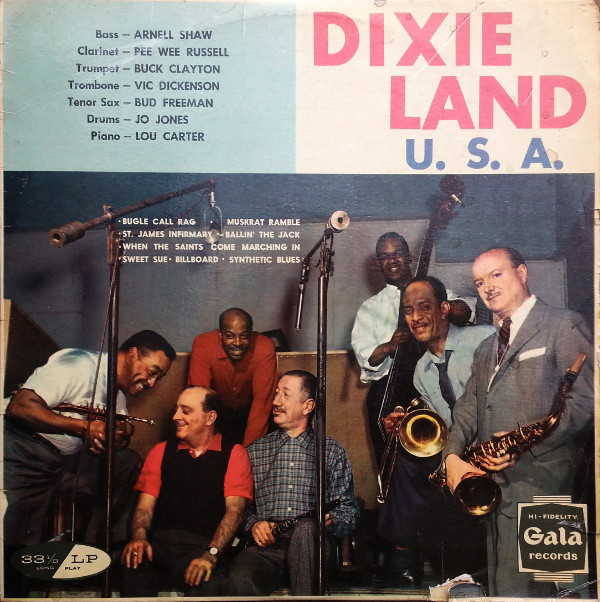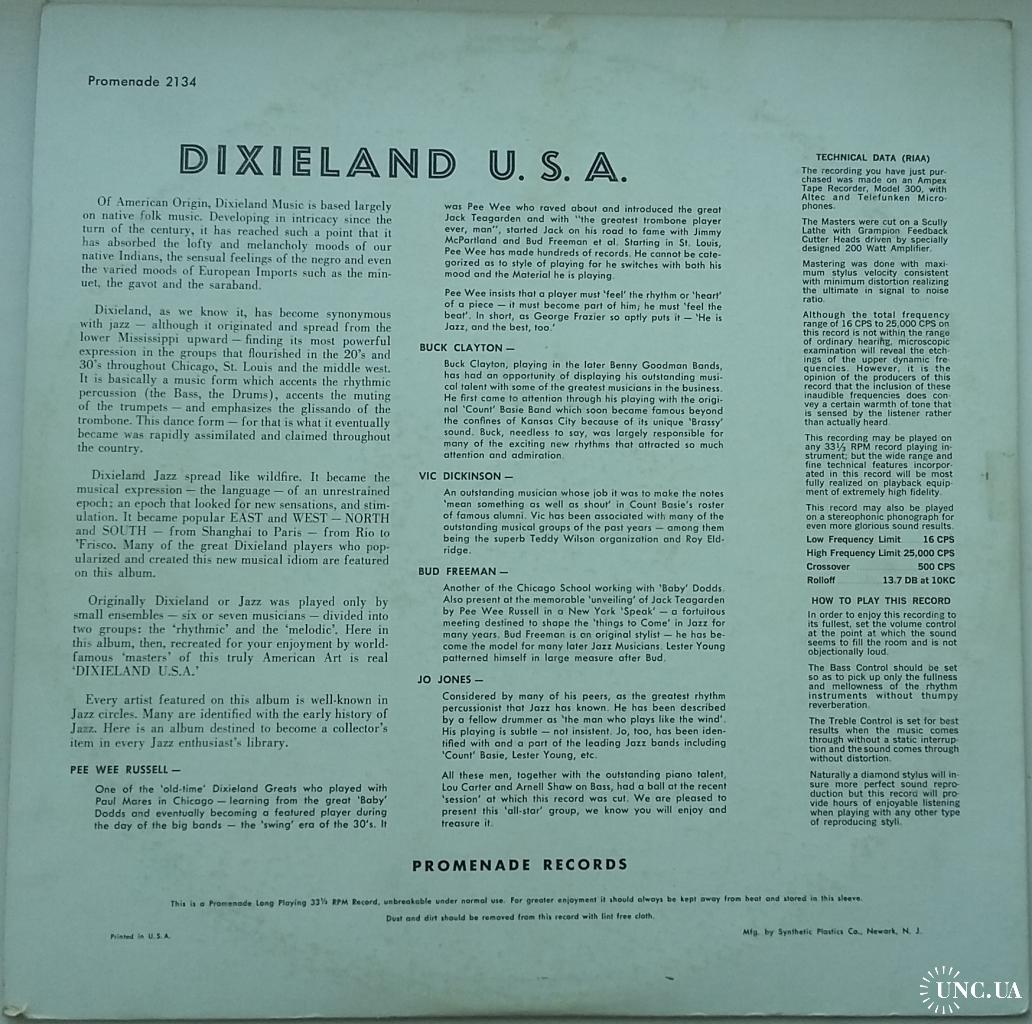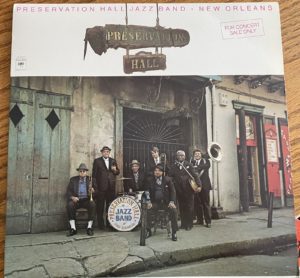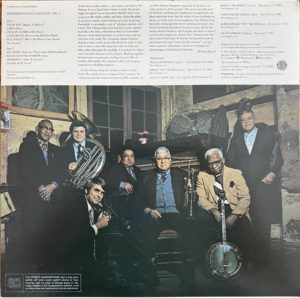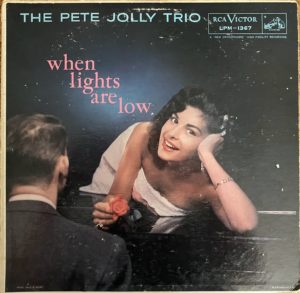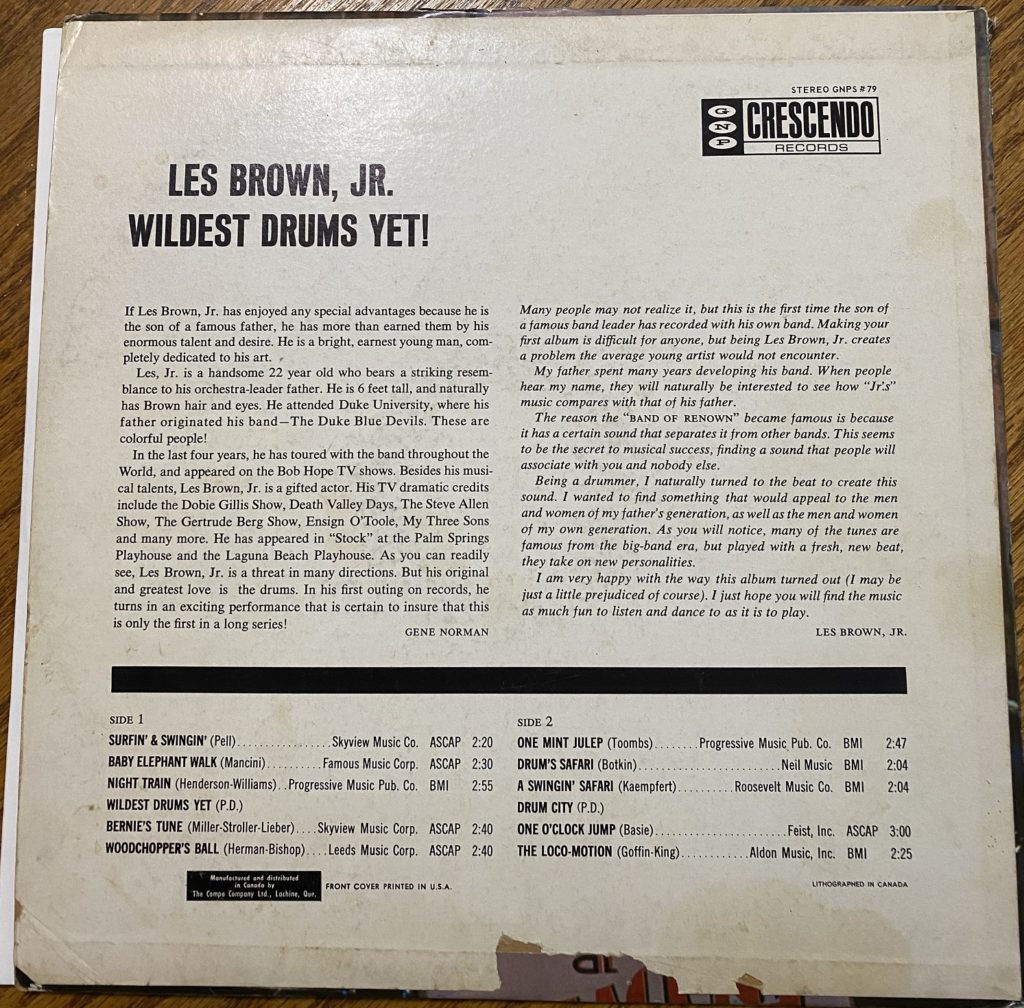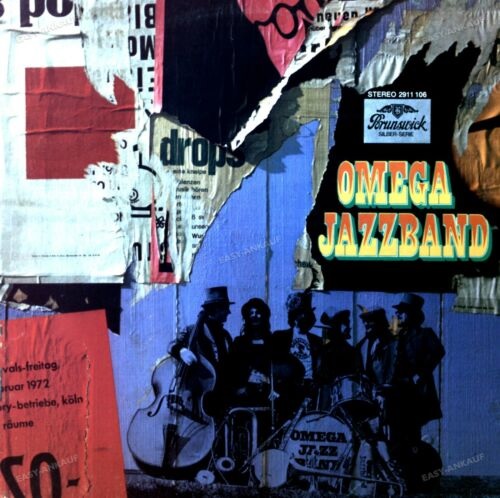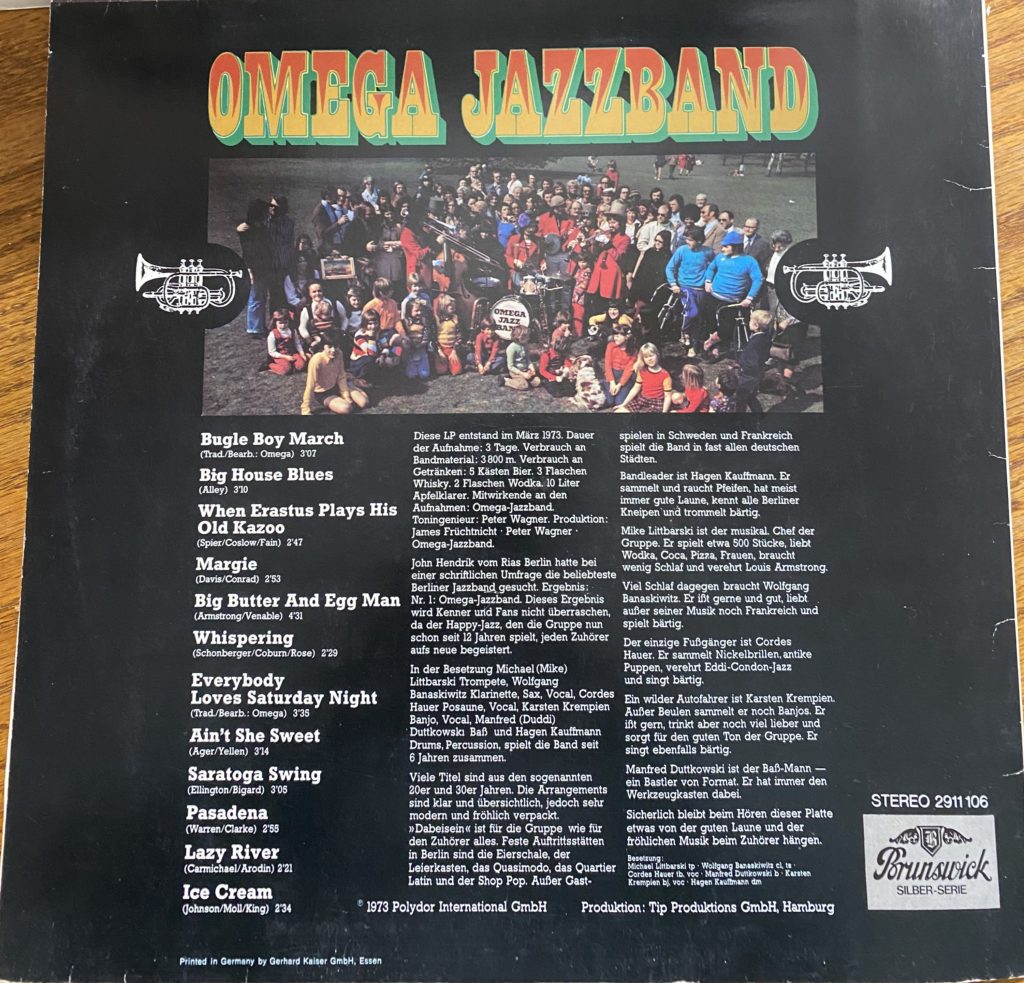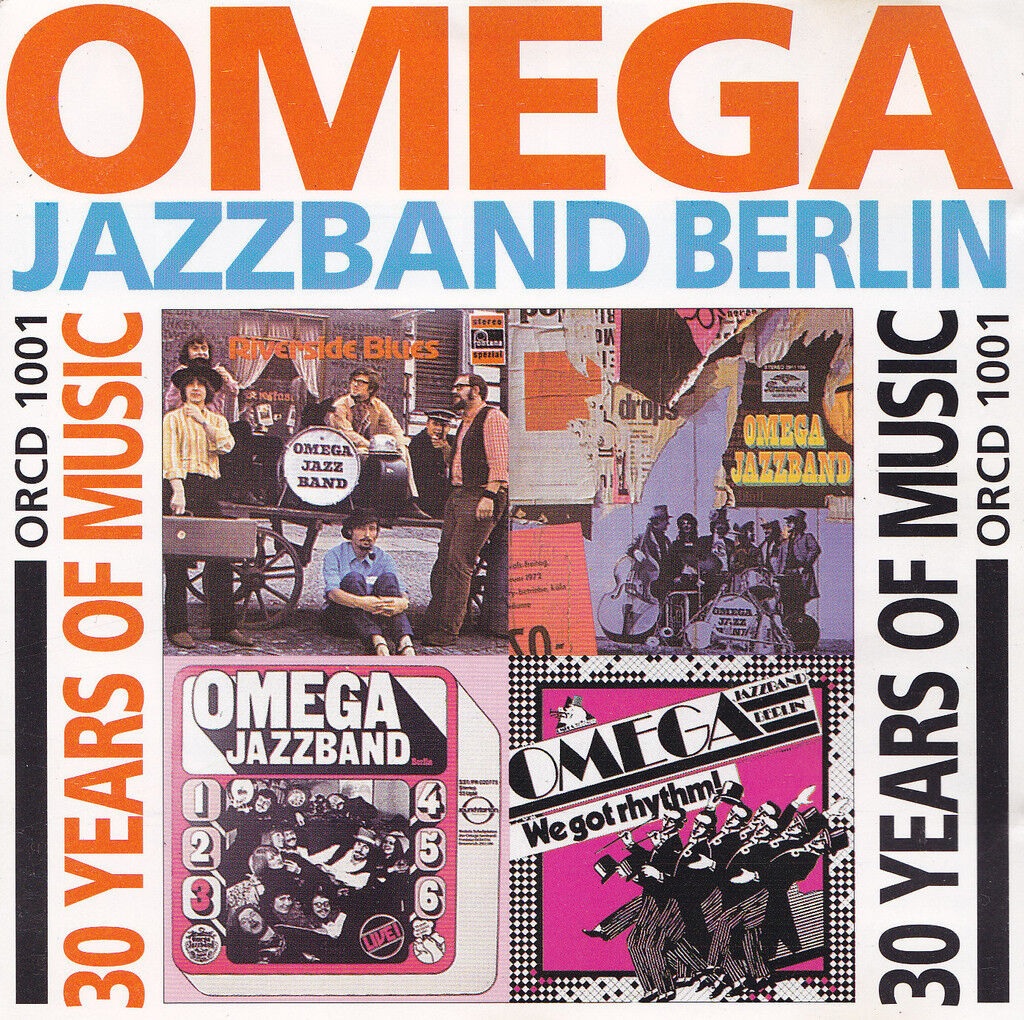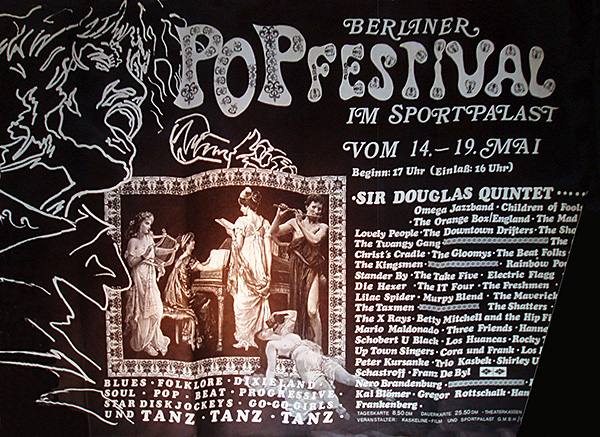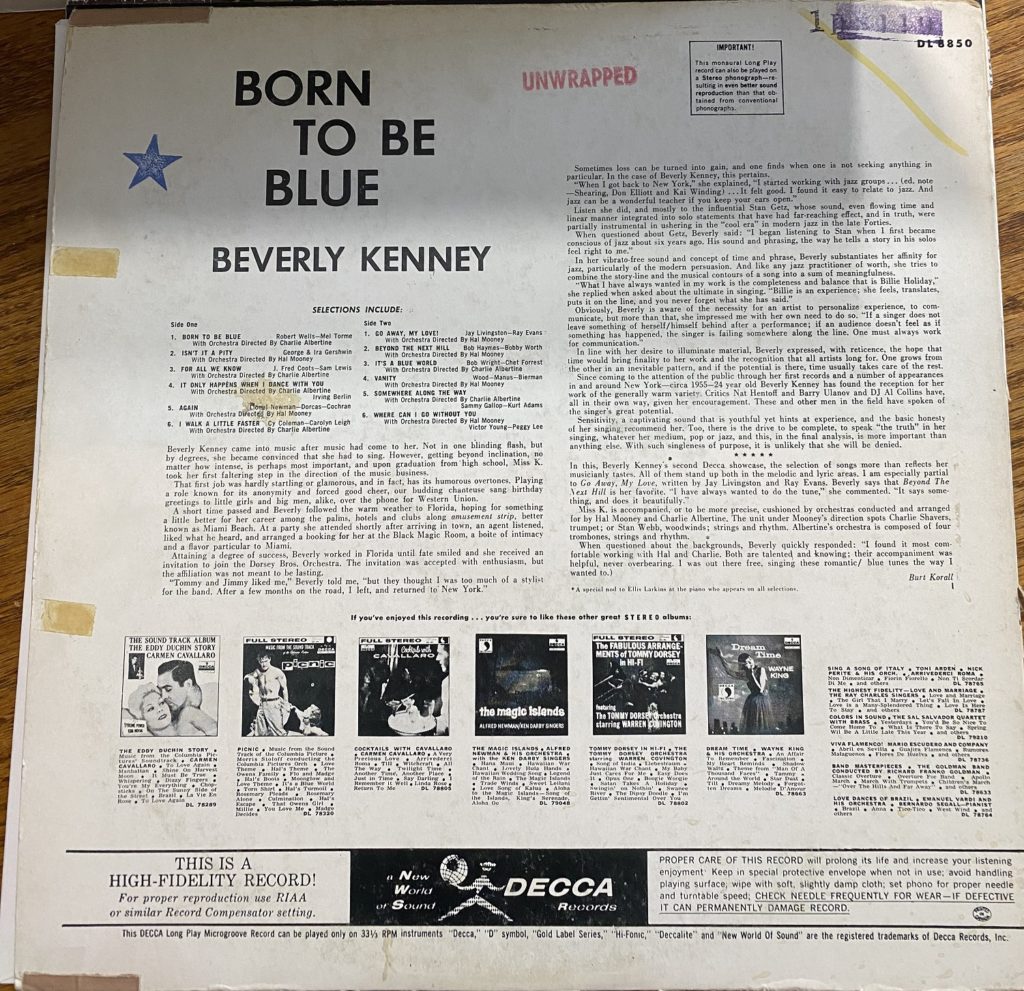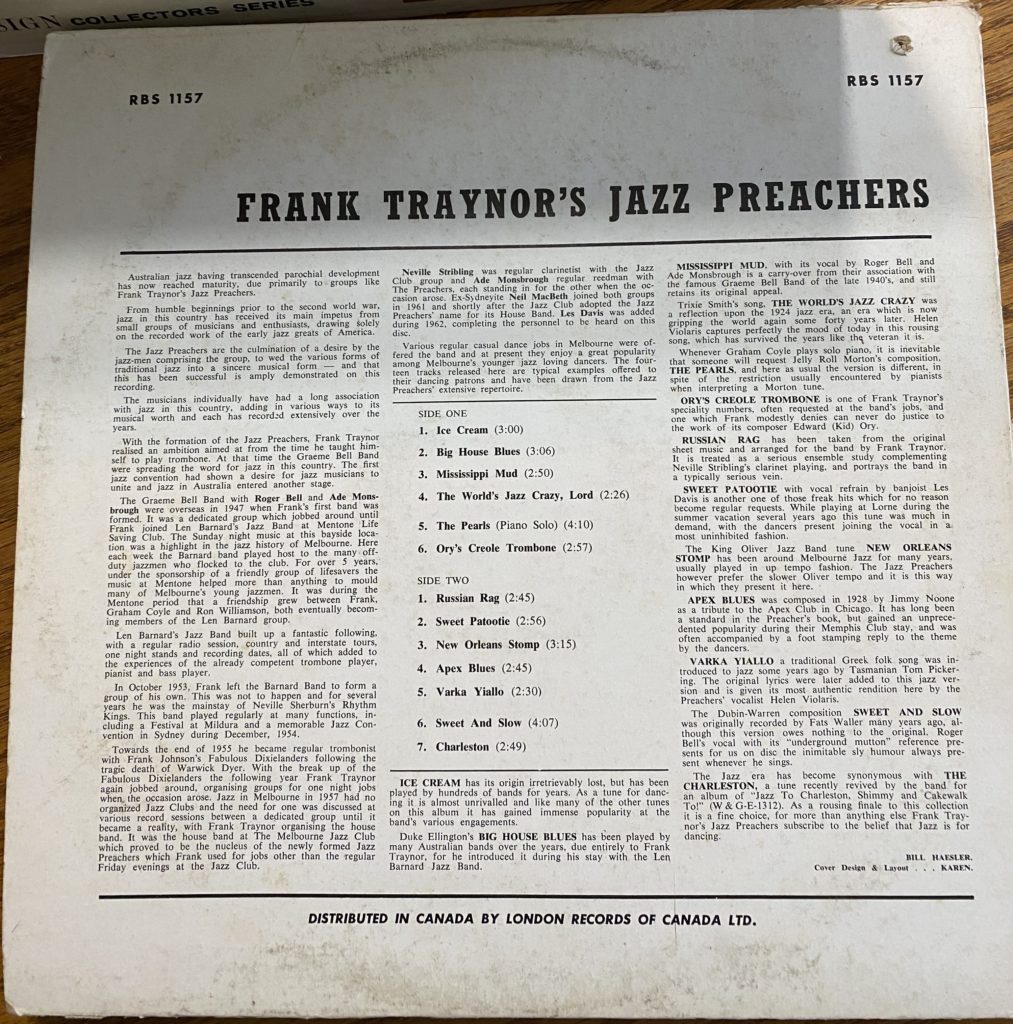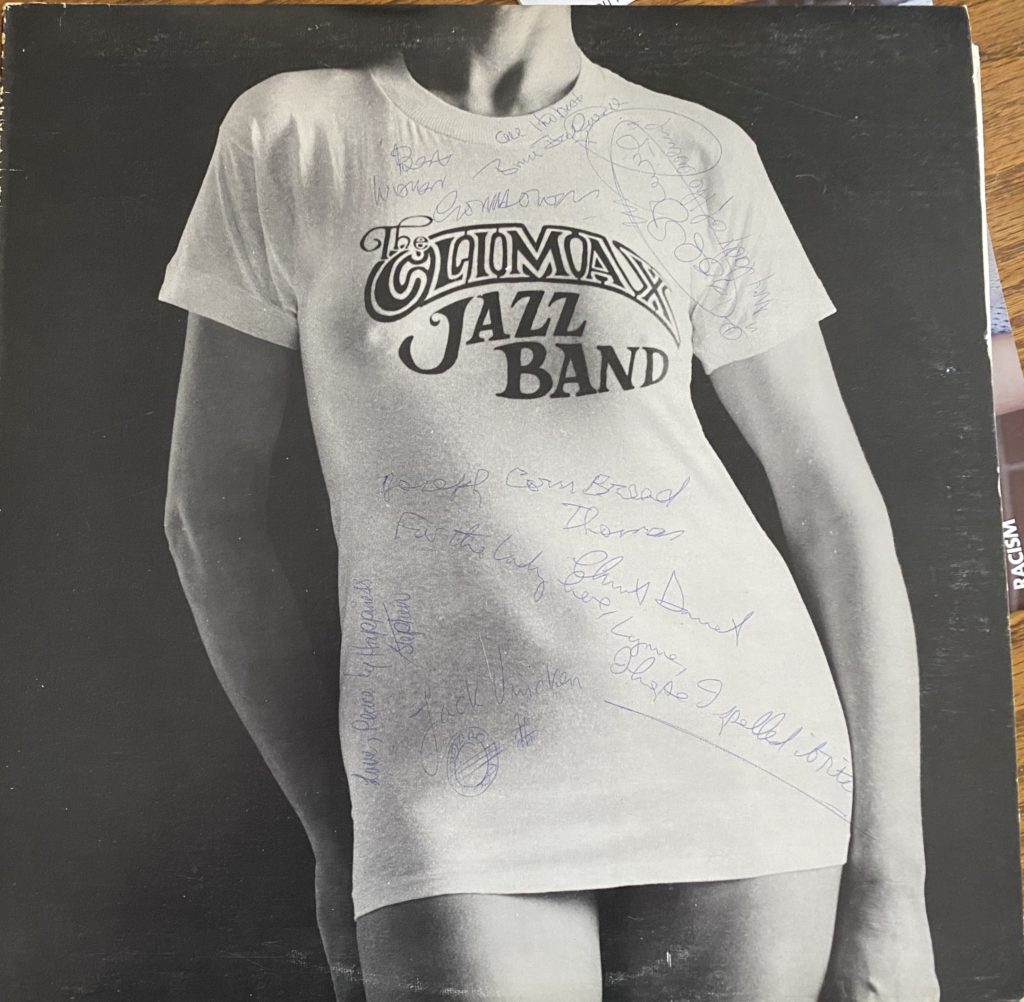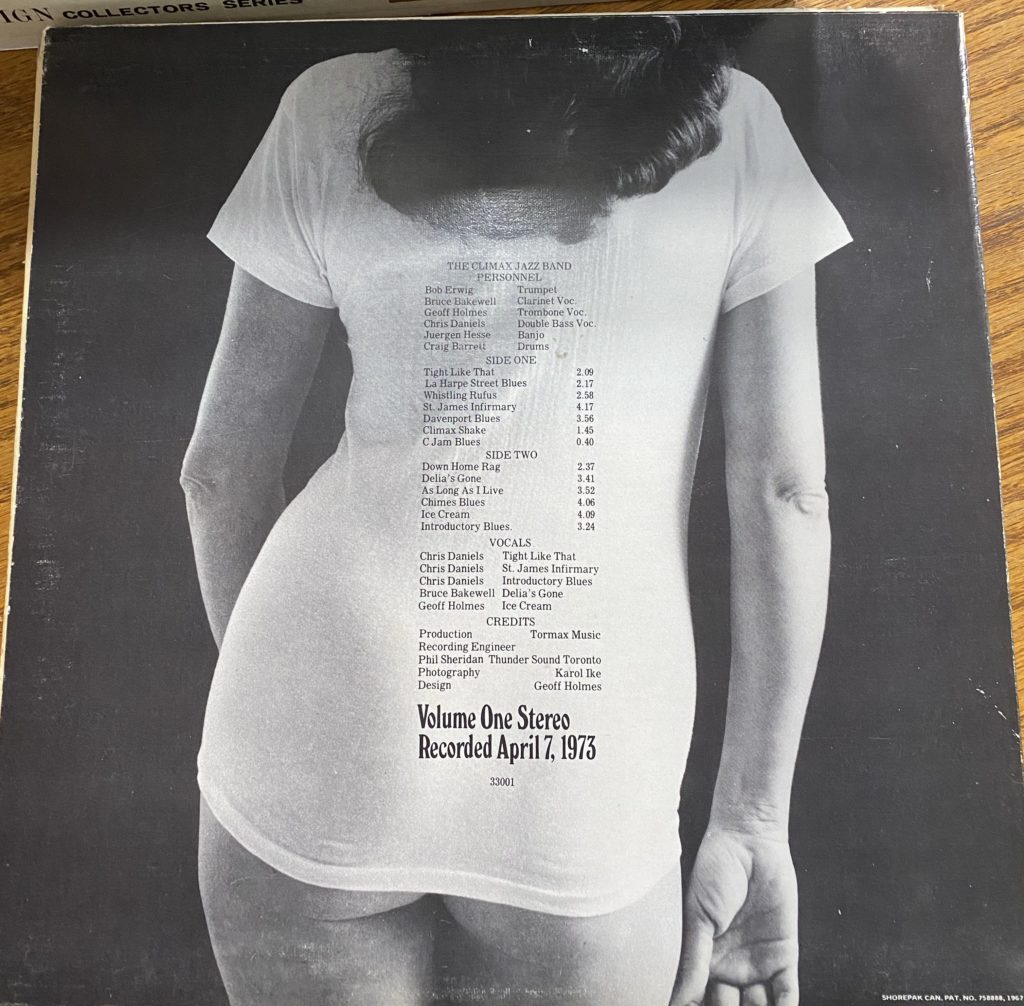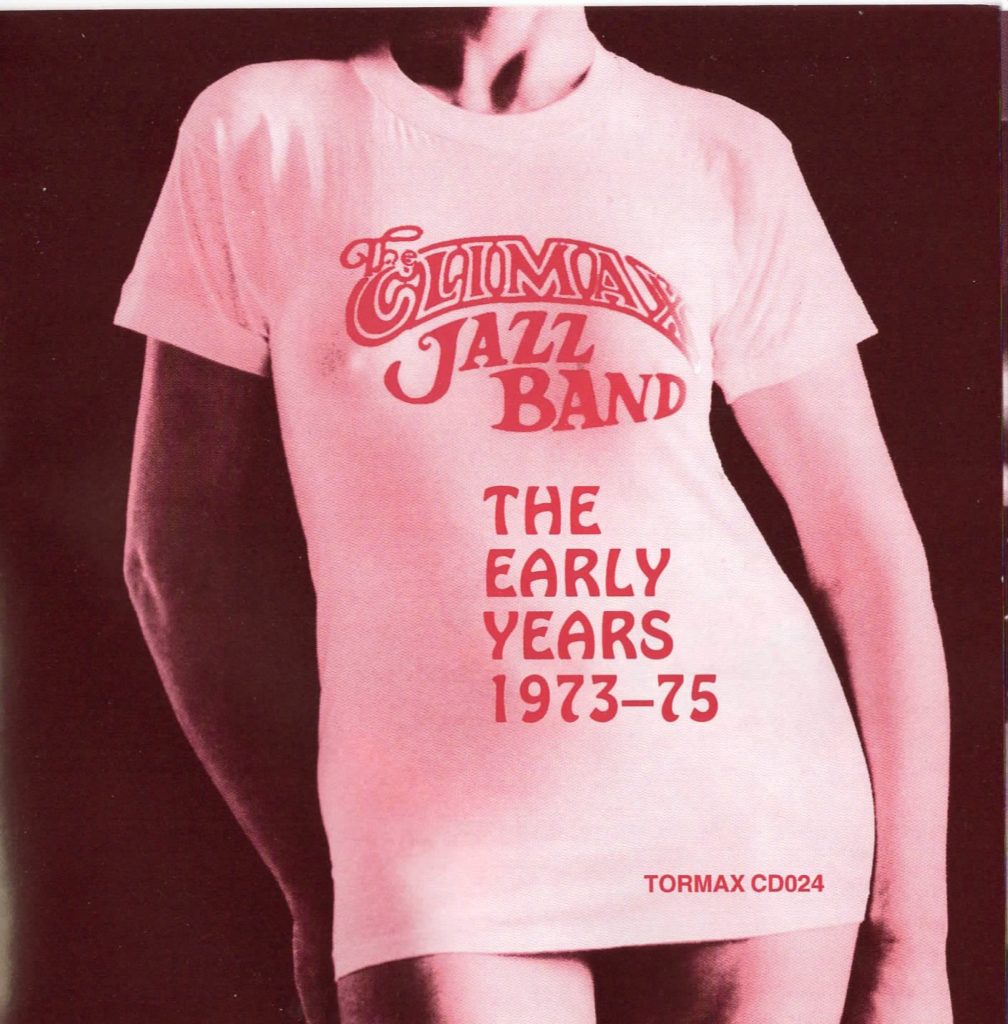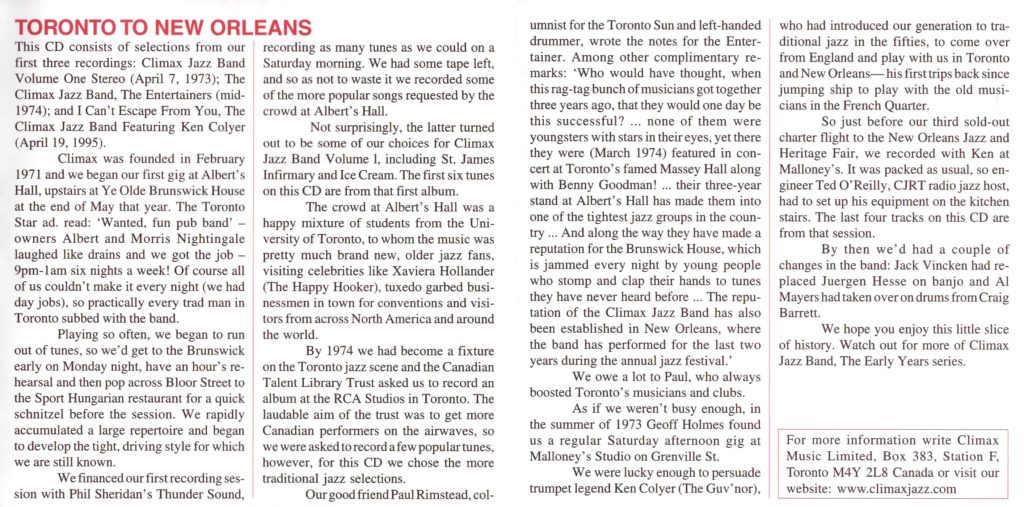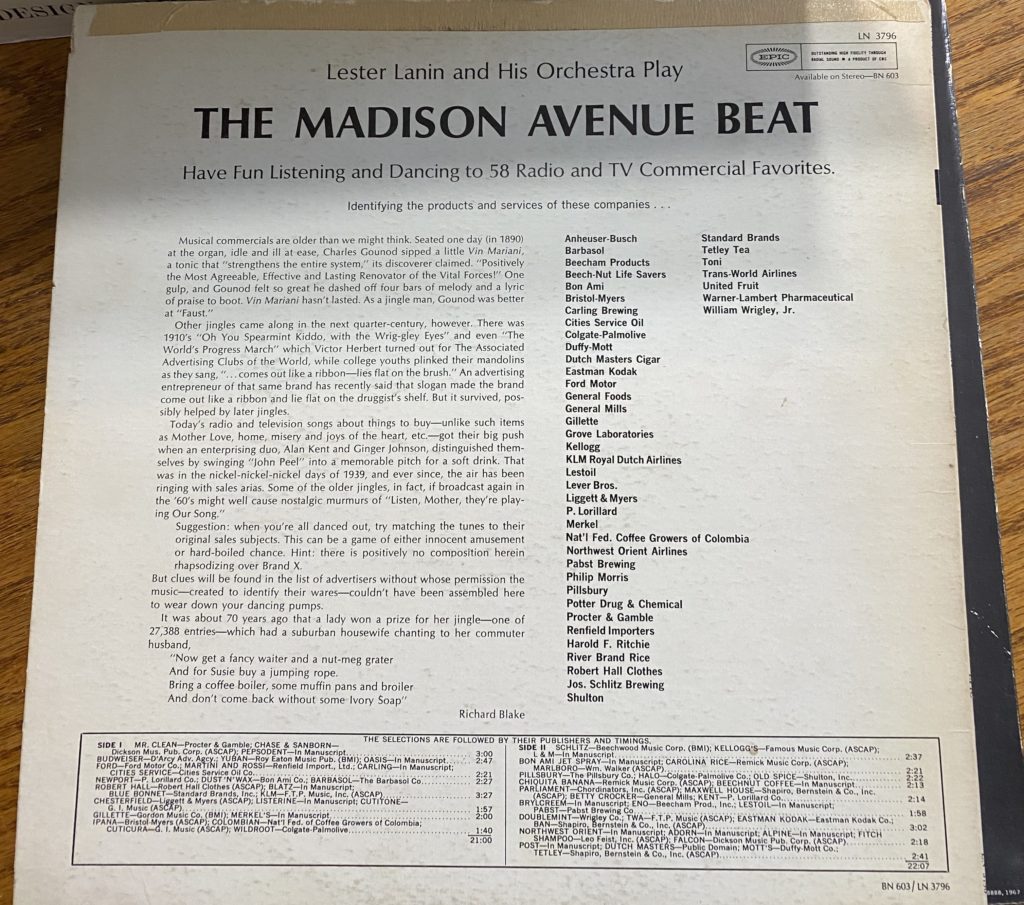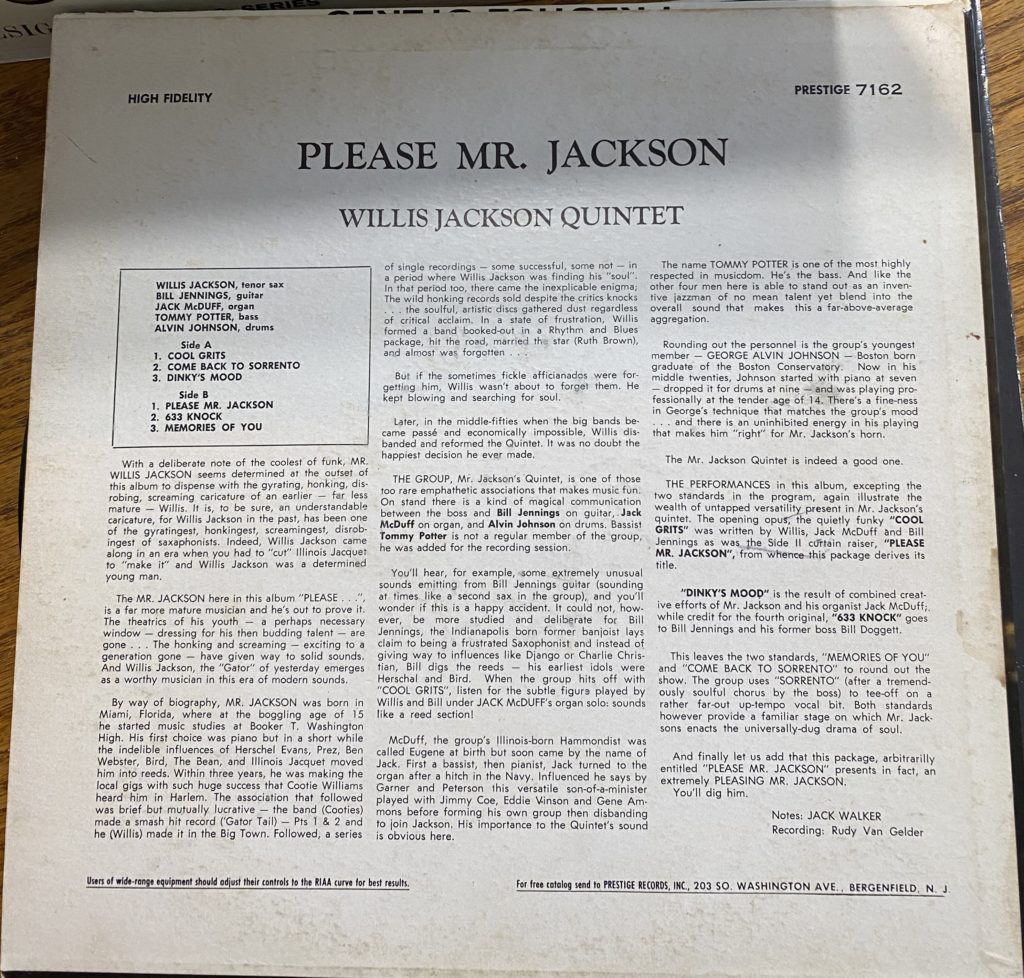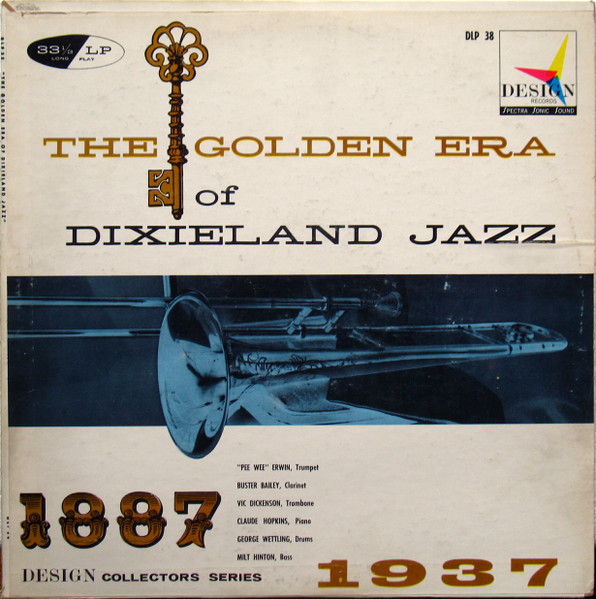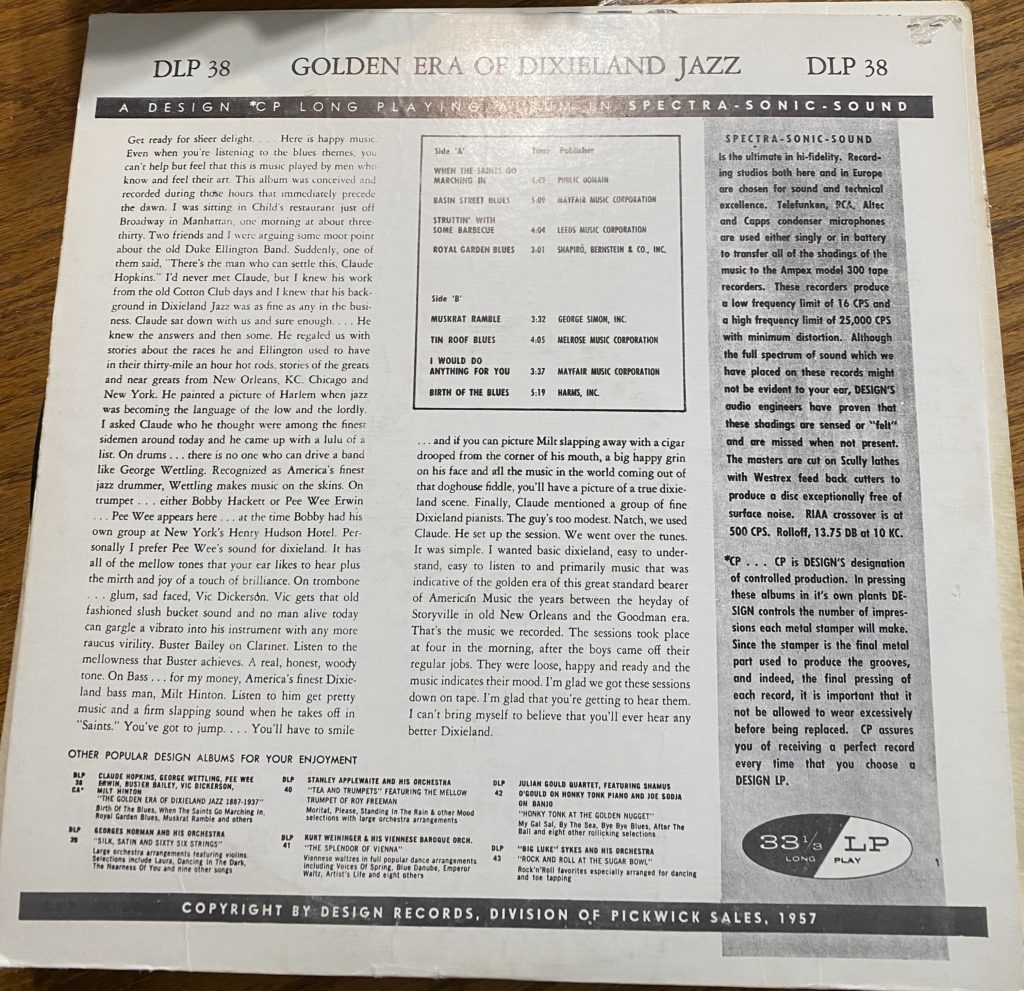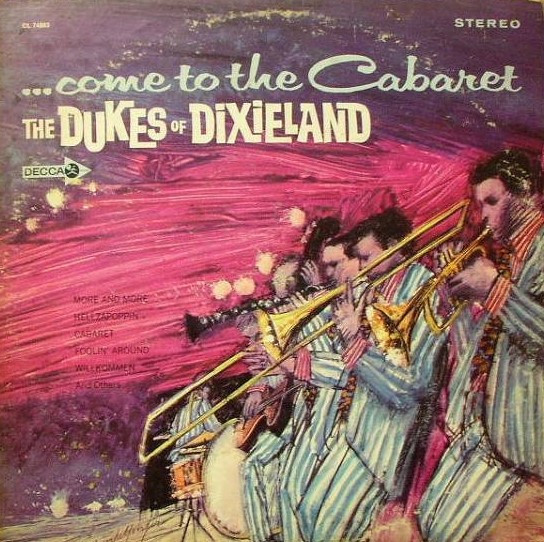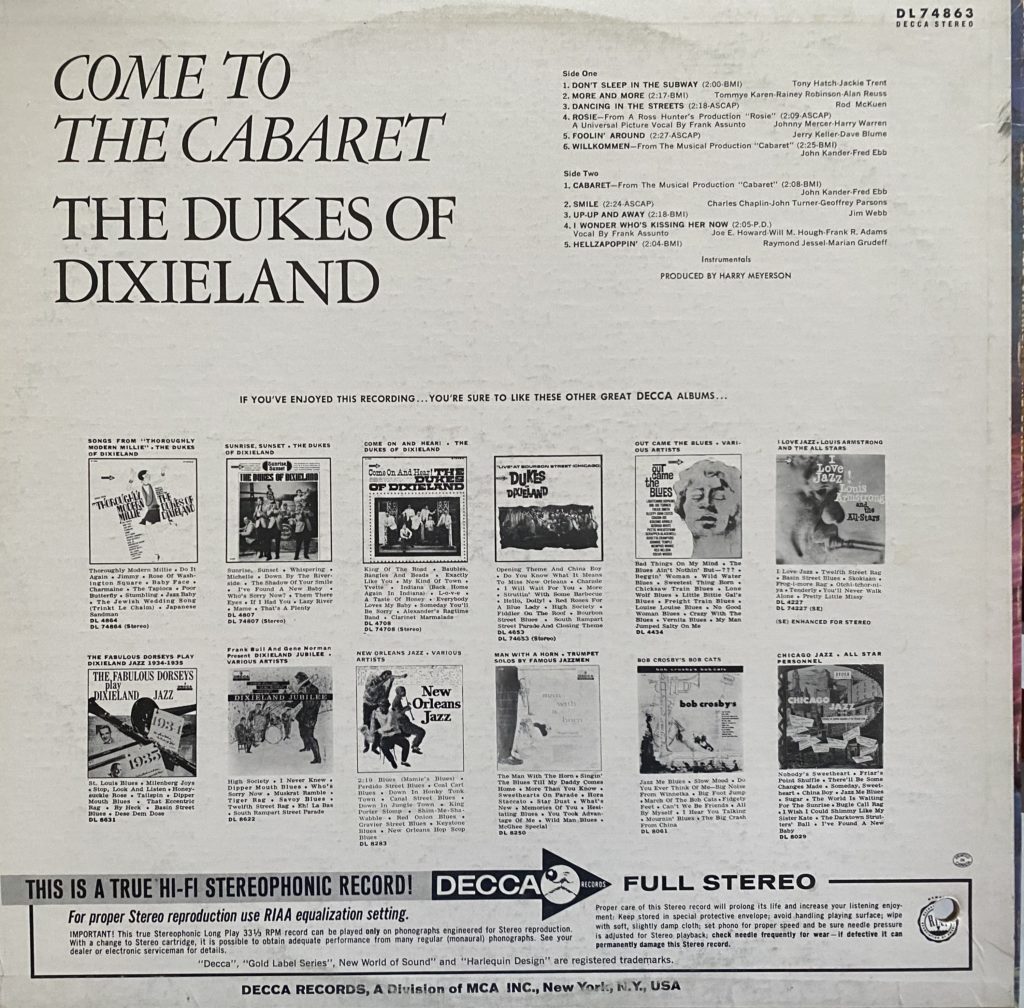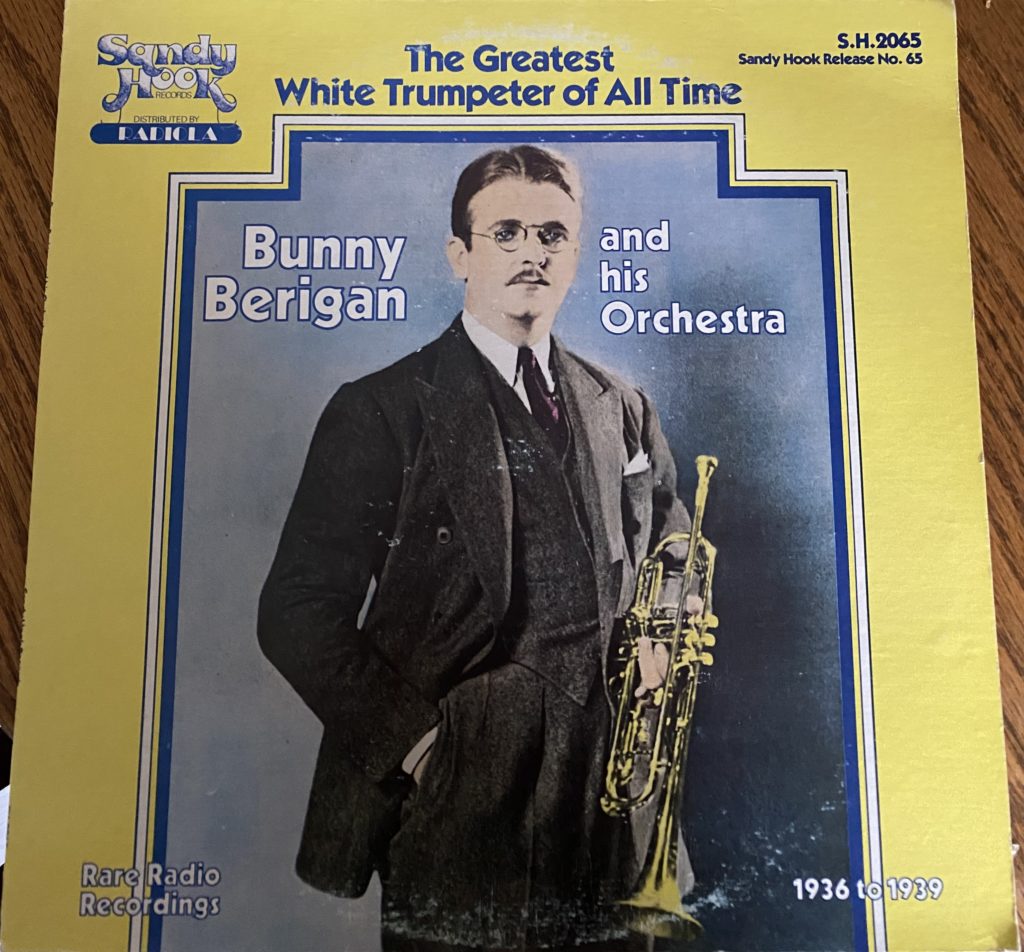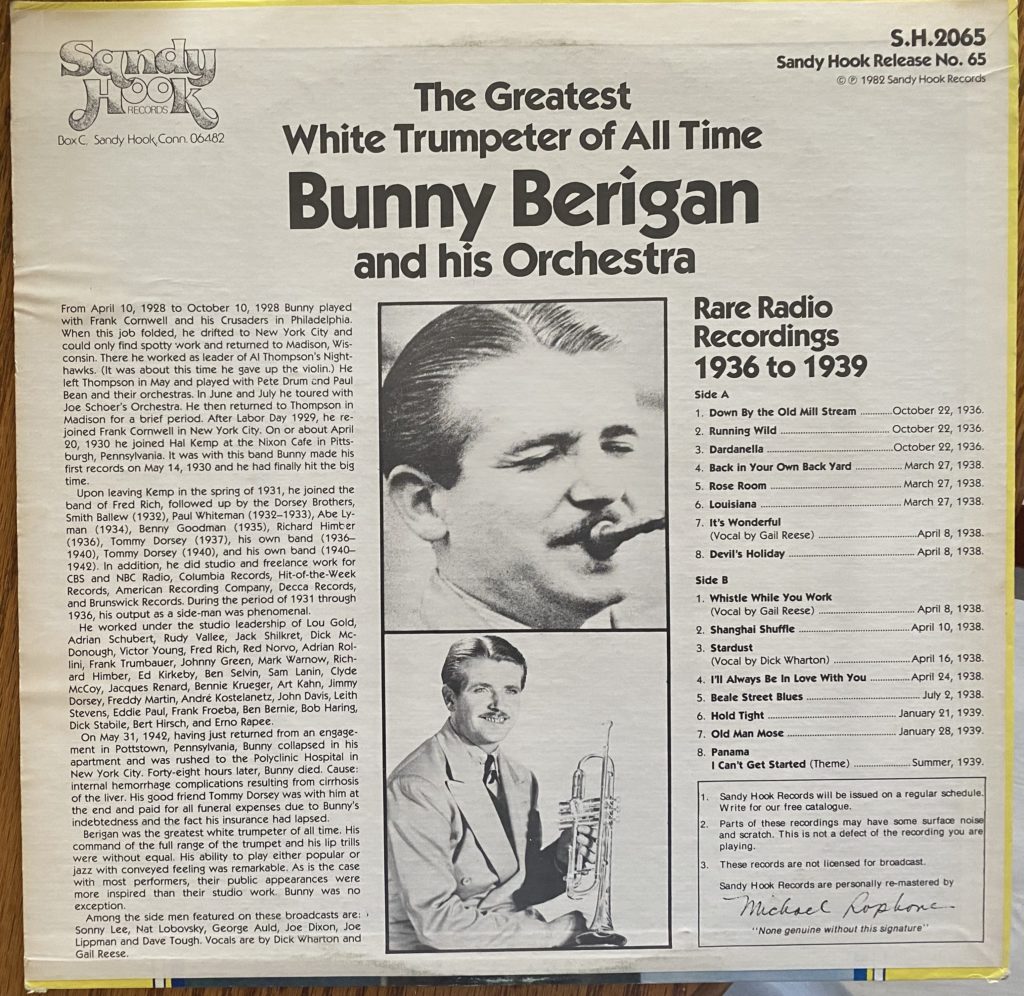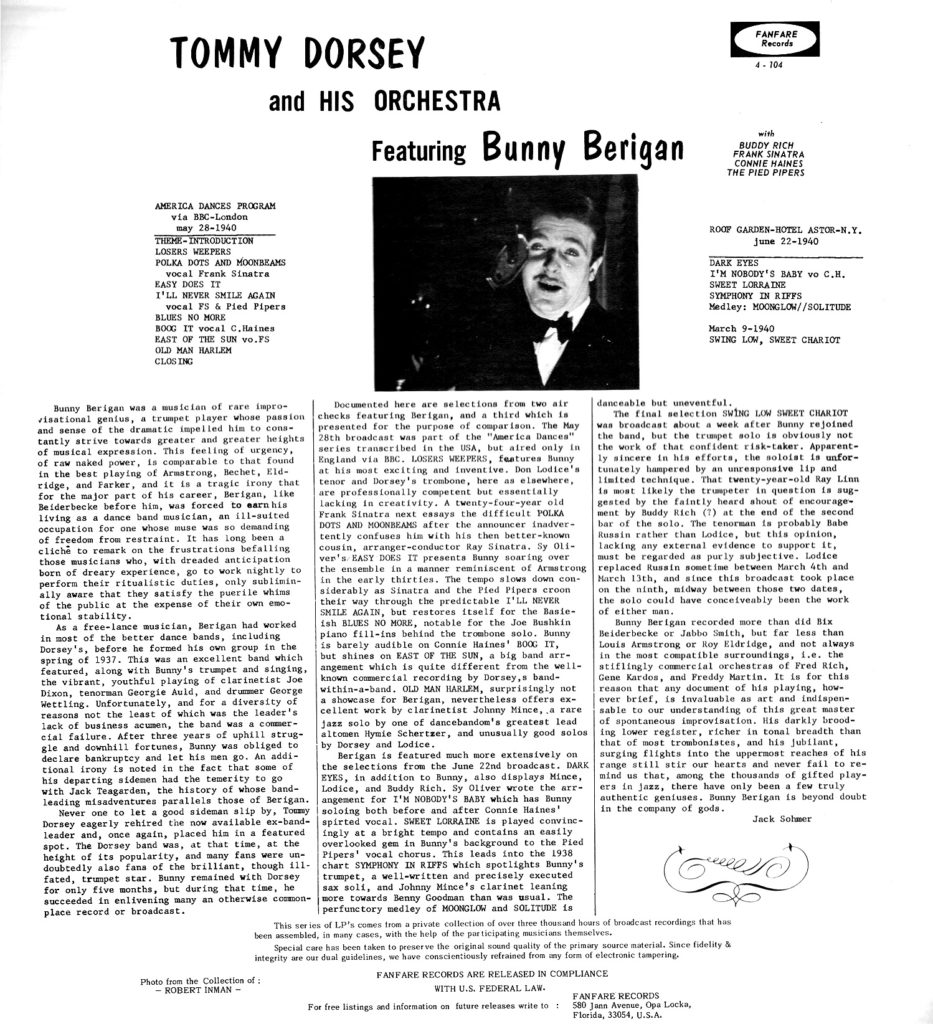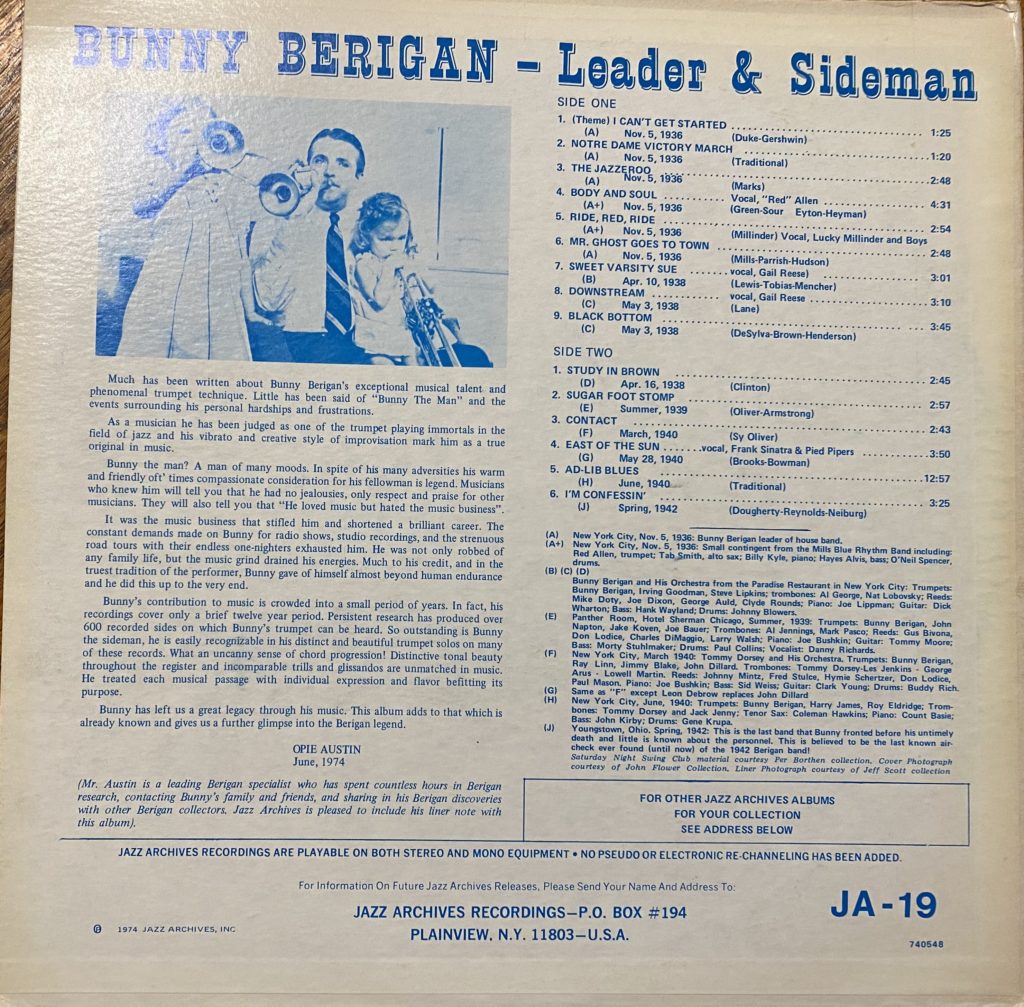 Back in April, I wrote another of my found vinyl blahgs with the unique title of A BAKER’S DOZEN MORE FOUND VINYL RECORDS. I featured 13 records I had purchased over the past year or so and I provided background information as well as selections from each album. I decided to browse through my record collection and find 13 more. Some I’ve had for a few years and others were recent purchases. Some are more interesting than others while some have never seen any other releases than these vinyl representations. It’s not a baker’s dozen of delicious doughnuts but I think there’s something in here to please almost anyone…except fans of modern music…but don’t get me started.
Back in April, I wrote another of my found vinyl blahgs with the unique title of A BAKER’S DOZEN MORE FOUND VINYL RECORDS. I featured 13 records I had purchased over the past year or so and I provided background information as well as selections from each album. I decided to browse through my record collection and find 13 more. Some I’ve had for a few years and others were recent purchases. Some are more interesting than others while some have never seen any other releases than these vinyl representations. It’s not a baker’s dozen of delicious doughnuts but I think there’s something in here to please almost anyone…except fans of modern music…but don’t get me started.
I thought I would share some photos of my stereo setup as well as my record collection. Here’s a shot of my main record shelf:
I don’t normally have a bag of yarn sitting in front of my shelf. There are four rows to the unit with all Sinatra records on the top shelf and a mixture of Big Bands, Vocalists, Harry Chapin, Billy Joel, Hoagy Carmichael, Dixieland bands, and Christmas albums across the other shelves. I also have an overflow section on the bottom of another book shelf:
These are records I have played but haven’t made their way to the main shelf. I also have a stack of records next to my stereo setup:
The stereo consists of a double cassette player, CD player, receiver, and my Yamaha turntable on top. That’s a wedding picture of my wife and I on the right. It was taken in 1987…but that’s another blahg.
In the last Baker’s Dozen blahg I ended off with some tracks by Bunny Berigan from a recent addition to my collection with the dubious title of “The Greatest White Trumpeter of All Time Bunny Berigan.” I had referenced three other Berigan albums I had in my collection which I owned because they had tracks by Frank Sinatra when Berigan and Sinatra were with Tommy Dorsey. I began culling my vinyl stash and I found one more Bunny Berigan album but it had no connection to Sinatra or Dorsey. The title of this one is “Take It, Bunny!”
Most of these tracks are from the mid to late 1930s and feature Berigan with his own and band and playing as a sideman with other bands. The very first track is Bunny Berigan’s theme song, “I Can’t Get Started.” It’s from 1936 and features Berigan’s trumpet talent and Berigan’s vocal.
Although all of the other tracks feature Berigan with many talented musicians, I want to offer up the second track on this album because it’s Berigan performing with the famous Glenn Miller. The track is “Solo Hop” recorded on April 25, 1935.
The “Solo Hop” track from Glenn Miller and Bunny Berigan had a real dixieland vibe to it and dixieland is going to be a theme in this blahg. Within the past two months I picked up the 1960 album “That Happy Dixieland Jazz” by Jimmy McPartland And His Dixielanders.
I’ll be honest that I love Dixieland and when I see an album in a thrift store bin that falls into that category then I’m going home with it. I had never heard of Jimmy McPartland so this was a good introduction. But where to start when this album is filled with nothing but Dixieland classics? Why not start with a song that gives a nod to the alleged birthplace of Dixieland: New Orleans. Here’s “Way Down Yonder in New Orleans” and it features McPartland doing a vocal.
If you have to choose another Dixieland classic performed by so many other bands, why not go with the old chestnut, “When The Saints Go Marching In”? I find McPartland’s version refreshingly different and we are treated to another vocal by McPartland.
I didn’t want to just drop in Jimmy McPartland and then dash along to someone else. Over two blahgs, I gave a nod to Bunny Berigan more than once so I thought I’d offer something else by McPartland. I came across a reference to an album that McPartland did where he covered songs from the musical “The Music Man.” The 1958 album is aptly titled “The Music Man” Goes Dixieland.
Of course it’s probably weird to hear anyone cover “Ya Got Trouble” other than the great Robert Preston but if you want to hear what Jimmy McPartland can do on the vocal, give a listen. Oh yeah, the instrumental parts are pretty good, too!
Slowing it down a little, here’s McPartland’s treatment of “Goodnight My Someone.” Strictly instrumental this one.
I’m definitely going to have a look out for that album.
The Dixieland theme continues with our next album but the songs are all vocals from a group called The Cheerleaders. The album is from 1958 on the Carlton album and is “The Cheerleaders Sing Dixieland Jazz”.
I could not find out much about The Cheerleaders. Most of the information is from the back cover:
What makes a “good group”? The answer is obviously a personal one and each of us would define it in his own terms. But there are certain things that must be common to both your definition and mine: The Cheerleaders sing in tune. Now there’s a gimmick in itself. Pat Pinney, Donna Manners, Tom Roddy, and Joe Pryor (as you listen from the top voice down) work as a unit – no one is flying off on an irresponsible tangent like a loose neutron which has just spotted a pretty female proton next door. There is cohesiveness in the way The Cheerleaders perform. A unity that can only verify their having been together since 1950, and digging it!
The shame of the music business is sometimes its lack of immediate recognition for deserving artists. There are many logical and illogical reasons for this which we needn’t burden ourselves with here. Suffice to say that The Cheerleaders, although perhaps new to your record player, have a large and loyal following thanks to appearances in such diverse media as New York’s “Blue Angel”, Palace Theatre, and T.V.’s Dave Garroway, Tennessee Ernie, Betty Hutton and Frank Sinatra shows.
I also found a site that posted this review of the album from Billboard Magazine on November 17, 1958:
“The bright, bouncy sound achieved by The Cheerleaders in this platter is more in the mood of the old Pied Pipers and Modernaires groups than anything that came out of New Orleans. About half of the songs are “semi-Dixie” treatments of oldies like “Copenhagen,” and the rest, like “Woodchoppers’ Ball,” are almost straight swing vocals. Nice stereo work, with singers “centred” before Side Robin’s ork. rather than confined to one channel. Group’s fans should like it.”
Let’s start then with selections from the album. Since the Billboard article says that “Copenhagen” is “semi-Dixie” then let’s give it a listen:
The next selection slows it down a bit on “Nocturne For The Blues”:
The Internet Movie Database page for The Cheerleaders, https://www.imdb.com/name/nm1318579/ lists some appearances by The Cheerleaders in 1954 on The Red Skelton Show and The Nat King Cole Show. I could not find videos for these but The Cheerleaders also appeared on Gary Crosby’s summer 1954 radio show and the audio is available for that appearance. Gary Crosby was, of course, the son of Bing Crosby and duets with The Cheerleaders on one of the numbers. Is it a duet if it’s Gary plus the four Cheerleaders? Regardless, here’s that duet on a song called “Red Top:”
The program aired on August 15, 1954 and also featured a guest appearance by Frank Sinatra. Sinatra did not sing with The Cheerleaders but they did get to do a solo effort on a song called “This Must Be The Place:”
As far as I can tell, this is the only album put out by The Cheerleaders. Discogs, https://www.discogs.com/release/10925346-The-Cheerleaders-Dollar-Bill-Second-Hand-Rose/image/SW1hZ2U6MzA1NDY4ODU= also lists a promo 45rpm record featuring two songs, “Dollar Bill and “Second Hand Rose.” No date is given for the release and I couldn’t find audio of those two songs. Here, at least, are images of the two sides of the record:
Let’s move on to some more instrumental music before getting back into the vocal albums. Here’s one I almost forgot to include. I normally record the album and then take a picture of the front and rear covers so I can post them. Well, I took the photo but forgot to record the LP. The album is “Dixieland Left And Right” featuring Johnny Best And His All Stars & Dick Cathcart And His All Stars. Here are the photos I took of the front and rear of the jacket:
Notice that the rear cover has nothing to add, information wise, than to provide the track listings. It’s possible that the inner liner, which mine is missing, might have contained more information because there was a gatefold edition where the inside opened like a book to reveal more details. Here’s a picture of what the gatefold version looked like:
I couldn’t find a larger or clearer image for the gatefold jacket but we can see it does contain more information than the front or rear covers combined. Here’s the introduction to the record:
About the Sounds…
This music is exhilarating, energized, effusive and ebullient Dixieland jazz.
It’s Two Bands – set in the most compelling and intriguing manner yet with both taste and tantalization.
Arranger Matty Matlock, trumpet leaders John Best and Dick Cathcart and Mercury Recording Director David Carroll present here, with artistry and artifice, something new, something fresh, something unique.
Instead of typing out all of the information for all of the recordings, I will only provide the relevant information to two of the tracks. The first is “Little Sir Echo.” Here’s what the gatefold information has to say:
LITTLE SIR ECHO
This number is, of course, ideal for the two band “echo” answering idea.
The introduction has “A” band (L) and “B” band (R) supplying the “echoes.” At 0.52 the second chorus starts with a bass solo (Marty Corb) from “B” band in the right channel. Then comes an interlude with “A” band (L) answered by the “B” ensemble on the other side. The third chorus starts with a guitar solo from the “B” guitarist (Allan Reuss) on the right and after a further answering engagement, the arrangement finishes with both bands eventually together.
Give a listen to “Little Sir Echo:”
The next tune has always been a favourite when I’ve heard it by vocalists or bands. The song is “Please Don’t Talk About Me When I’m Gone.” Here’s what the liner notes say about this version.
PLEASE DON’T TALK ABOUT ME WHEN I’M GONE
“Another trumpet player’s favorite,” asserts Matty Matlock.
Trumpet-leader Best plays the first half of the charge – from his place in “A” based on the left. There are xylophone figures from both channels. The bridge is taken by the xylophone alone on the left (Gene Eaton). The last eight measures features vibraphone (Frank Flynn) on the right side.
The second chorus highlights the “B” band – on the right – with the banjo.
The last chorus brings in both bands. There’s an amazing break with tuba on the right channel in unison with xylophone on the left. The bridge has here drum breaks on the left (Jack Sperling) followed by drummer Nick Fatool in band “B” on the right. For the last eight bars the complete ensemble brings the number in a happy Dixieland close
Here’s “Please Don’t Talk About Me When I’m Gone:”
It’s an interesting concept to have two different bands playing in opposing speakers on the left and right. To my knowledge and research, it does not appear that Johnny Best and His All Stars & Dick Cathcart and His All Stars ever recorded together again.
Johnny Best passed away in 2003. His obituary from the San Diego Union Tribune newspaper provides us with a little more information about him:
September 28, 2003
His trumpet solos punctuated some of the most familiar tunes of the big-band era, helping to define and shape the sounds of such legends as Glenn Miller and Artie Shaw.
As he rose to prominence, Johnny Best exhibited a quality uncommon to musicians of his time: easily adapting to the varying arrangements, parameters and personalities of rival bands.
“It was quite a feat, being able to play in two of the most popular bands of the era,” said Dan Del Fiorentino, curator of the Museum of Making Music in Carlsbad. “Johnny left a unique mark, and the big-band era wouldn’t have been the same without him.”
Mr. Best, whose trumpet solos were featured in such big-band hits as “Stardust” and “Frenesi,” died Sept. 19 at his La Jolla home. He was 89.
“He had a good sound on the instrument,” said Billy May, a former band leader and musical contemporary. “Playing the trumpet can be an endurance contest with your lip, and Johnny had command. He played on ‘Begin the Beguin,’ which put Artie Shaw in business.”
Although the popularity of big bands began to fade in the 1950s, Mr. Best’s talents remained in demand. After World War II, he performed with an array of notable band leaders, including May, Benny Goodman, Bob Crosby, Tommy Dorsey, Ray Conniff and Harry James.
He also worked steadily as a studio musician, often commuting to Hollywood in the late 1950s after buying an avocado ranch in Pauma Valley.
In recent years, which found him playing at San Diego venues, he had been working on an oral history of his career. At the urging of his family, he recorded his memories on tape, which his stepchildren hope to convert into a book.
“On top of everything, Johnny was a really nice guy,” Del Fiorentino said. “He got a lot of solo work because everybody liked him. Sitting and talking to him, I got the sense that he was more than just a little passionate about what he did.
“It was his life – and he loved it.”
John McClanian Best, a La Jolla resident since 1967, was born in Shelby, N.C. He formed his own orchestra in high school and played in bands at Duke University and Davidson College.
Before World War II, he played with the Les Brown, Charlie Barnet, Artie Shaw and Glenn Miller bands. He played for the Shaw hits “Frenesi,” “Traffic Jam” and “Old, Old Castle in Scotland.”
His trumpet solo on the 1940 Miller hit “Stardust” was among his most memorable and a personal favorite.
“He had this lilt – an unorthodox way of changing chords, of going from A to B, so to speak,” Del Fiorentino said, “A casual listener might say, ‘That’s interesting.’ But if you were a musician, your mouth dropped.” During the war, Mr. Best served in the Navy and played in Shaw’s Navy band, entertaining troops in Europe and the South Pacific. “He was part of a great trumpet section with Frank Beach and Conrad Gozzo,” May said.
In “Orchestra Wives,” a 1942 movie featuring the music of the Glenn Miller Orchestra, Mr. Best’s trumpet solo on “At Last” was among three hit songs featured. Except in creating the music, actor John Payne took the part of Mr. Best on screen.
Mr. Best played on V-disc recordings, distributed during World War II by the U.S. government to military personnel overseas. “He felt he was serving his country in two ways, through the band and the V-discs that boosted morale,” Del Fiorentino said. “He was a real patriot who loved his country.”
Mr. Best’s postwar career included sessions with Billie Holiday, Frank Sinatra, Louis Armstrong and Nat “King” Cole.
After settling in California in the 1950s, he played in various combos in nightclubs in the San Diego and Los Angeles areas.
“When he wasn’t picking avocados in his orchard in Pauma Valley, he organized and managed frequent jazz concerts in the San Diego area as well as fronting for groups on extended overseas tours,” said stepdaughter Elizabeth Frazee.
In 1967, he married Mary Lou Janis, a La Jolla widow. He settled in La Jolla but often visited his avocado ranch, where in 1982 a fall from a tree broke his back and left him a paraplegic.
During two months of recovery at UCSD Medical Center, he entertained hospital staff and patients on his trumpet, Frazee said.
Using a wheelchair, Mr. Best continued to play and travel, performing until 2001. “He practiced every day until about six months ago,” said stepdaughter Marie Janis.
He often played the first notes of the song “Mary Lou” to beckon his wife from another room in their home, Janis said. Similar fanfares greeted other family members whose names corresponded to song titles or lyrics.
Mr. Best’s wife died in September 1996 during the couple’s trip to Hobart, Australia.
Survivors include a brother, Herman Best of Charlotte, N.C.; stepchildren, Leonard Janis of Chula Vista; Theil Shelton, Elizabeth Frazee and Louise Duchein, all of Santa Barbara; Paul Janis and Susan Edwards, both of San Diego; Barbara Kennedy of Palmdale; Robert Janis of St. Petersburg, Fla.; and Marie Janis of La Jolla; and 11 grandchildren.
Private services were scheduled.
Donations are suggested to San Diego Hospice or the John Best Memorial Book Fund Trust in care of San Diego National Bank. The fund was established to create a book of Mr. Best’s life story based on the oral history he recorded.
I don’t know if the book of Johnny Best’s memories was ever published but in 1998, Johnny Best did an extensive video interview with Monk Rowe for the Hamilton College Jazz Archive in San Diego. The entire video, running well over an hour, is available on YouTube: https://www.youtube.com/watch?v=HQWk99bSpWQ
Dick Cathcart passed away in 1993. He had a featured obituary in the New York Times on November 12, 1993:
There are some wonderful videos of Dick Cathcart performing on the Lawrence Welk Show but I particularly enjoyed the following one that featured Cathcart prominently on trumpet along with the Lennon Sisters, including his wife Peggy, on the Dixieland standard “Ja-Da”:
I’ll be honest that the following record from 1962 did not turn out to be one of my favourites. The album cover was appealing and you’d think with the title “Red Hot & Peppy Fields” that it would be more appealing. Have a look at the covers:
The take away is the word “belting” which is used a few times on the liner notes.
“Red Hot & Peppy” is a collection of familiar Blues and Ballads and Ragtime Tunes belted with a bucketful of bright cheer.
Here is a singer, belting like they used to, selling like you liked them to. Remember? And all the belting and the selling so neatly tied up in this package will stir you right up to the top of your total recall.
That seems to be the problem with this album. She’s belting them out but I find it too brassy for my tastes. I like the band behind her but we don’t get any information who they were. Still, listen for yourself and see what you think. Give a listen to “Bye Bye Blackbird:”
You would think that a Dixieland standard like “Bill Bailey, Won’t You Please Come Home” might stand up well but, again, the instruments work well but get drowned out by Peppy Fields:
The rear cover mentions that Peppy’s brother was Irving Fields. “Red Hot & Peppy Fields” does not feature her brother Irving but Peppy did release a single with the Irving Fields Trio featuring the songs “After You’ve Gone” and “Some Of These Days.” Here’s the photo cover:
I could not find anywhere to listen to those two songs online. Peppy Fields passed away in 1998 at the age of 1993.
The Irving Fields Trio were a little more popular and they even appeared in two Soundies. I have mentioned Soundies in a few blahgs and this is usually the description I used:
“Soundies are three-minute American musical films, produced between 1940 and 1947, each containing a song, dance, and/or band or orchestral number. Produced professionally on 35mm black-and-white film, like theatrical motion pictures, they were printed in the more portable and economical 16mm gauge.
The films were shown in a coin-operated “movie jukebox” called the Panoram, manufactured by the Mills Novelty Company of Chicago. Each Panoram housed a 16mm RCA film projector, with eight Soundies films threaded in an endless-loop arrangement. A system of mirrors flashed the image from the lower half of the cabinet onto a front-facing screen in the top half. Each film cost 10 cents to play, and there was no choice of song; the patron saw whatever film was next in the queue. Panorams could be found in public amusement centers, nightclubs, taverns, restaurants, and factory lounges, and the films were changed weekly. The completed Soundies were generally made available within a few weeks of their filming, by the Soundies Distributing Corporation of
Here’s a nice Soundie of “I guess I Took Too Much For Granted” with Leona Fredericks doing the vocals with The Irving Fields Trio:
If you really want to hear The Irving Fields Trio swing then check out this Soundie of the trio doing “Mexican Hotfoot”:
Irving Fields died in 2016 at the age of 101. He published an autobiography entitled “The Pianos I Have Known.”
In 2015, at the age of 100, Irving Fields gave an interview about his tips for longevity:
To me, that’s more interesting than his sister Peppy’s album.
Keeping with the vocal side but continuing with Dixieland, here’s an album I picked up that did not disappoint. It’s the 1960 album, “Eydie in Dixieland” featuring Eydie Gormé. I won’t quibble that the album title actually hyphenates “Dixie-land.”
If there is one drawback to this album it’s that we don’t get a list of the musicians backing Eydie. We can see that Don Costa arranged and produced the album but there’s no information about the band playing on each number. Oh well, we’ll have to just let the music speak for itself. Where to begin when offering up tracks? Most of the songs are well known in the Dixieland circles but the song “Limehouse Blues” struck me as one that isn’t really is well known on the vocal side. Here’s Eydie’s version:
I thought the other track I would present would be a comparison piece. I lamented how Peppy Fields’ version of “Bill Bailey, Won’t You Please Come Home” didn’t do anything for me. Listen to what a singer like Eydie can do with the old chestnut:
I won’t talk further about Eydie Gormé. I will mention, however, a personal note. I was privileged to see Eydie Gormé with her husband Steven Lawrence perform along with Frank Sinatra as part of his Diamond Jubilee World Tour. They came to Maple Leaf Gardens in Toronto on November 12th, 1991.
I found that Steve and Eydie were a bit schmaltzy by 1991 but I enjoyed them. I taped the concert on a mini cassette-recorder. I remember converting Steve & Eydie’s portion to a digital file but I’d have to go looking for it.
Okay, so let’s move back to the instrumental but still keeping with the Dixieland theme. This time it’s Kings of Dixieland Volume 2 from 1959:
What is it about Dixieland bands with striped coats and straw hats posing on old cars? Check out the cover of the one and only album put out by Canada’s own “Bridge City Dixieland Jazz Band”:
By the way, if you want to find out more about the “Bridge City Dixieland Jazz Band” then you check out two of my other blahgs, ZOEY, FRANK, JUNE & ALL THAT JAZZ and BRIDGE CITY AGAIN, PIRATES, AND HAPPY BIRTHDAY TO CANADA!
Getting back to Kings of Dixieland, you will note that this is Volume Two on the Crown Records label. If you check out the band’s listing on Discogs, https://www.discogs.com/artist/2254890-Kings-Of-Dixieland you will notice that the listings for Kings of Dixieland on the Crown Record label run up to Volume 8 but there is no listing for Volume 1. I guess that makes sense because you don’t call your first album Volume 1 unless you know you’re going to issue other Volume titled records. The only album in the discography listing for Kings of Dixieland on Crown Records without “Volume” in the title is “The Fantabulous Kings Of Dixieland”:

Is this Volume 1? Check out the musicians listed on “The Fantabulous Kings Of Dixieland”:
Bass – Marty Corb
Clarinet – Matty Matlock
Drums – Ben Pollack
Piano – Clyde Ridge
Saxophone – Jack Ordean
Trombone – Ray Conniff
Trumpet – Clyde Hurley, Dick Cathcart
Now check out the musicians listed for the Volume 2 LP:
Bass, Horn [Bass] – Red Callender
Clarinet – Heinie Beau
Drums – Nick Fatool
Guitar – George Van Eps
Liner Notes – Frank Evans (3)
Piano – Ray Sherman
Saxophone – Eddie Miller (2)
Trombone – Moe Schneider
Trumpet – Dick Cathcart
Only Dick Cathcart repeats on Volume 2. Yes, the same Dick Cathcart that I highlighted earlier in this blahg who played on “Dixieland Left And Right”. For kicks, I checked out the musician ensemble for Volume Three and here’s what we learn:
Bass, Tuba [Bass Horn] – Red Callender
Clarinet – Matty Matlock
Drums – Milt Holland, Nick Fatool
Guitar – Allan Reuss
Liner Notes – John Marlo
Piano – Ray Sherman
Tenor Saxophone – Eddie Miller (2)
Trombone – Moe Schneider
Trumpet – Dick Cathcart
Many of the same musicians from Volume Two appear on Volume Three. Matty Matlock who played clarinet on “The Fantabulous Kings Of Dixieland” is back on Volume Three. Maybe it was a rotating group of musicians with some subbing for others based on their availability to record at the time. Let’s just give up trying to figure it out and get on with presenting the music. Here’s the very first track, “New Washington And Lee Swing”:
Here’s another from the album with a title I don’t usually associate with Dixieland. This time it’s “Wait Till The Sun Shines Nellie” and it’s given a true Dixieland treatment:
Now for a change of pace. Next up is “AMF Presents Music For Swingers”…no not those kind of Swingers. As the cover says, the record is “Dedicated to the millions of swingers in the United States and all over the world who regularly enjoy the fun of bowling.”
There is nothing from the rear cover that gives us any mention of the musicians who played on this album or even what the AMF stood for. I thought the AMF might have something do with Bowling but couldn’t make the initials work. I also thought the AMF might have be the American Music Federation or something like that. The only real clue was the sentence that starts “One particular song, the “Swingers Theme,” originated as the music for a jingle used in a series of television commercials produced for AMF.” The liner notes credit the song “Swingers Theme” to a Ben Allen. When I tried researching the song title with the name “Ben Allen”, I came up with this listing from the “Catalog of Copyright Entries Third Series” from 1969:
Here we learn not only is Swingers Theme attributed to Ben Allen but is associated with the American Machine & Foundry Co. That is not at all what I thought AMF stood for. So why is the American Machine & Foundry Co associated with Bowling? Well, this comes from the Richland County, Ohio, History website, https://richlandcountyhistory.com/2021/09/26/how-shelby-launched-the-golden-age-of-bowling-1953/, and provides us with the connection:
How Shelby AMF Launched The Golden Age of Bowling : 1953
The Golden Age of Bowling in the United States took place in the 1950s and ‘60s, and the epicenter of all that fun was Shelby, Ohio. That was where AMF had its Bowling Division factory, and it was their job to produce every sort of innovative new aspect of the sport that eventually came to be the standard bowling experience across the nation.
The number of Bowling Alleys in the USA went from 6,000 in 1955 to 11,000 by 1963, and during this same period, the number of people in Bowling Leagues rose from just under 3 million to over 7 million. Without question, this explosion of popularity can be attributed to one single factor: the automatic pinsetter.
America’s pinsetter machines were manufactured in Shelby. In fact, within a year of locating their bowling operations to Shelby, AMF began calling it the Pinspotter Division.
Before that revolutionary concept of bowling was introduced, every alley required a team of pinsetter boys who ran up from behind to stand the bowling pins back up. When AMF invented the robotic system that could mechanically collect and re-set pins in the alley, the game moved much more quickly.
Frank Gilbert told me he was one of the pinsetters as a kid, and sometimes the bowling alley would let them bowl for free if they set their own pins.
It didn’t take bowlers long to get used to the idea that re-placing the pins could be so quick, and right away every bowling alley in America wanted them. That was when AMF bought the empty Shelby Cycle factory to set up shop producing pinsetter machines.
It was a complex operation in 1953 when the factory opened, and in the first few frames of its production it took 200 Shelby folks to turn out 200 pinsetter machines a month.
Within a year there were 500 people, and by the time Shelby had established itself as the most important bowling hub of the nation there were 950 employed in the game.
I haven’t been able to find the audio or even video for the jingle that featured “Swingers Theme.” At least, I can present the version of that song from this album:
Before I offer another song from the album, I want to post a video of a song called “Bowling Brings Out The Swinger In You” from 1967. That phrase appears at the bottom of the front cover of “AMF Presents Music For Swingers.” This video is the audio for the 45rpm record of The Twilights, an Australian group, singing “Bowling Brings Out The Swinger In You”:
“Bowling Brings Out The Swinger In You” and “Swingers Theme” sound the same to me. Check out the labels for the 45rpm single:
At the bottom, in both label images, you can make out that the song is copyrighted by the American Machine & Foundry Co. The 45rpm record was 1967 and was sold or given away in bowling alleys and so probably was the album ““AMF Presents Music For Swingers.”
So what other track do I post here from this album? The first side is mostly swinging tracks but things slow down a bit with the strings for the “B” side. Why not present a song that speaks to what you do after the bowling is over. It’s all about “Headin’ Home:”
I bet you didn’t think I could get so much out of an album dedicated to Bowling! Watch those balls!
This blahg, which is supposed to present a baker’s dozen albums, is going to blow past that. I’ve already done that when I presented tracks from the Jimmy McPartland album ” ‘The Music Man’ Goes Dixieland”; an album I don’t even own. I even presented some soundies from the the Irving Fields Trio and a 45 about bowling by The Twilights! So why not slip in two albums by the same artist that came to me from two different thrift stores? The first one I purchased was the 1962 album “Dixieland (Live Performance In New Orleans)” featuring Pete Fountain.
At least this album provides us with a list of the musicians performing with Pete Fountain. Here’s the line-up
Clarinet – Harry Shields, Pete Fountain
Piano – Roy Zimmerman
Tenor Saxophone – Lester Bouchon
Trombone – Jack Delaney
Trumpet – George Girard
Trumpet, Vocals – Tony Almerico
I guess if this is “Live Performance in New Orleans” then I’m probably obligated to present “Way Down Yonder In New Orleans.” It’s a very short version and most of the track is taken up by introductions to the musicians listed above and including others such as Johnny Castang on drums.
Before moving on to the next Pete Fountain album I’ll offer a second track from “Live Performance in New Orleans.” With most Dixieland albums we find that all of the songs are similar classics such as “Bill Bailey”, “Tin Roof Blues”, and “When The Saints Go Marchin’ In.” I decided to select the title that didn’t seem like something I’ve heard over and over again on every other Dixieland album. Here’s “Ballin’ The Jack:”
A funny aside about the song “Ballin’ The Jack” or “Balling The Jack” concerns one of the first times I heard the song. It was on the album “Jerry Colonna Entertains At Your Party.”
I have a few Jerry Colonna albums but I like the cover on this one. I would have loved to have gone to a party where Jerry Colonna was entertaining. Have a listen to his version of “Balling The Jack” from YouTube:
Sticking with Pete Fountain, I’ll insert here the other album I picked up when planning to do this second blahg of Baker’s Dozen. I found that I was going to be short two albums for this blahg so I searched through a number of stacks at a thrift store in Kingston, Ontario and came up with a couple I thought would fit well into my narrative. One of them was another Pete Fountain record with the title of “Standing Room Only” from 1965 on the Coral label.
The front cover has an actual photo of “Pete’s Place” at 800 Bourbon Street in New Orleans. This live album is three years after “Live Performance in New Orleans” and features a different cast of musicians playing with Fountain:
Clarinet – Pete Fountain
Piano – Earl Vuiovich
Drums – Nick Fatool
Tenor Saxophone – Eddie Miller
Trombone – Bob Havens
Trumpet – Charley Teagarden
Vibes – Godfrey Hirsch
Bass – Oliver Felix
From the rear cover there’s a nice write up for the first song I want to post. Memories of You, Eubie Blake’s beautiful song, is a showcase for the lyrical talents of Eddie Miller and Pete. Although their instruments are of contrasting character, they exhibit a real rapport in their sympathetic, “singing” variations. Here’s “Memories of You:”
Before I continue with another track from the 1965 album”Standing Room Only,” I want to show a video of what it was like inside “Pete’s Place” in 1965. The same year as the release of this album there was a Universal short called “Pete’s Place” which highlighted a little bit of Mardis Gras and then cut to the interior of “Pete’s Place” to feature music by Pete Fountain and Godfrey Hirsch: vibes, Earl Vuiovich: piano, Paul Guma: guitar, Oliver “Sticks” Felix: bass, Paul Edwards: drums. Here’s the poster for the short and below that is the video that is hosted in YouTube.
PBS also did a special on Pete Fountain in 1980. Here’s a description of the special before it was re-aired in 2017 “A pre-reality TV era PBS takes a look at Pete’s rise as a musician, joins Pete and his band in their Winnebago as they cross the country to a well-paying gig, and stop in at a crawfish boil hosted by Pete. It also examines Pete’s rise to fame with the Lawrence Welk Show and has some great footage of Bourbon Street and The Half-Fast Walking Club on Mardi Gras.”
Pete Fountain passed away on August 8, 2016 at the age of 86. He did a lot of playing and a lot of rambling in his time. From the “Standing Room Only” album here’s a “Ramblin’ Medley:”
Keeping with the ‘Pete’, here’s another album that’s allegedly by another Pete but I have my doubts. This time it’s Pete Hurtz And His Dixiaires with their album “Midnight In New Orleans.”
This album is a Canadian release and surprisingly is the only album I can find by Pete Hurtz. In fact, the only information I can find about Pete Hurtz comes from the rear of the album jacket:
Pete Hurtz And His Dixiaires have marched and stomped the route from Memphis to New Orleans “many a time” and even did their type of Dixie stomping in towns above the Mason Dixon line…Pete Hurtz was born January 19th, 125 years after the date of birth of his hero, General Robert E. Lee, in Charleston, South Carolina not far from where the first shot was fired in the Civil War. Before going into the service he had drifted down to New Orleans and acquired a reputation of “sitting-in” and vowed that one day he would have a Dixieland band of his own, which he did upon his release from the Army.
It is also interesting to note that Pete Hurtz’ one year old son bears the first name of Grant–Please note that Hurtz married a girl from Concord, New Hampshire, a true northerner!
For the record, pardon the pun, General Robert E. Lee was born in 1807 so if Pete Hurtz was born 125 years later then that would have been in 1932. Having his birth year and all the other biographical information, including the name of his son, from the jacket then you would think it would be easy to find out more online somewhere about Pete Hurtz. That is not the case. We don’t even know what instrument Pete Hurtz played. I’m not even sure there really was a Pete Hurtz. My doubts about him and the Dixiaires came after to listening to the song “Manhattan” from this album. It twigged something in me when I heard the song. First, listen to the alleged Pete Hurtz and the Dixiaires version:
I realized I had heard this same version played on an album by the Bill Berry Quartet entitled “Jazz & Swinging Percussion.” On the Bill Berry Quartet album, the song is called “Broadway By Night.” Here’s a YouTube video of the song that actually shows a portion of the front cover.
Here’s the front cover of the Bill Berry Quartet album:

–
If you read the comments section to the above YouTube video for the Bill Berry Quartet, I posted eight years ago, under my scobeyfan name, the following comment:
This is odd. I have the same album with the same songs on two different labels by two different bands. The first claims to be The Dixie Rebels (Palace Label) and the 2nd is by Pete Hurtz and his Dixiaires (Maple-Leaf Records). Your version by the Bill Berry Quartet is the exact same as my two. I suspect it was some studio band with this record released on different labels. Who knows who the real band was.
Here’s the front and rear covers to The Dixie Rebels album I reference on the Palace label:
There is nothing on the back cover to identify the musicians or even the release date of the album. This is really the summary of what we have from the rear cover about the Dixie Rebels:
In this album were are proud to present the DIXIE REBELS, a group of outstanding young collegiates who are destined to become one of America’s foremost exponents of Dixieland music. Their renditions of “When The Saints Go Marching In” and “Down On Basin Street” are memorable true interpretations of Dixieland at its best.
The track on this album that matches “Manhattan” from the Pete Hurtz album and “Broadway At Night” from the Bill Berry Quartet album is “Down On Basin Street.” Listen closely and compare it to the tracks I posted above.
All three of the tracks have similar run times so I’m sure they’re all the same version. As for the Dixie Rebels, there was a band by that name that released albums on the Command label. I even wrote a blahg about them under the title AYE AYE ITUNES, THIS CUSTOMER IS ALWAYS RIGHT. The Dixie Rebels on the Command label actually featured Pee Wee Irwin playing under the name “Big Jeb Dooley.” I don’t believe they are associated in any way with the Dixie Rebels from the Palace label. I have compared all of the tracks on the Pete Hurtz “Dixieland” album and those on the Dixie Rebels “Dixieland” album and they are all the same. The only difference is that the track titles on each is the same on the first side but different on the flip side although the instrumentals are the exact same.
Pete Hurtz – Dixieland The Dixie Rebels – Dixieland
When The Saints Go Marching In When The Saints Go Marching In
Big Town Dixie Big Town Dixie
Broadway Blues Broadway Blues
Billboard March Billboard March
Swinging Dixie Swinging Dixie
Times Square Dixieland Blues
Dream Street New Orleans Blues
Manhattan Down On Basin Street
Dixieland Blues Way Down Yonder
The Bill Berry Quartet album has a slightly different track listing:
Dream Street
Almost Like Being In Love
Manhattan Blues
Times Square
Broadway And 10th
Schubert Alley
Old Devil Moon
June Is Busting Out All Over
Broadway By Night
How Do You Speak To An Angel
Blow Gabriel Blow
The Night Was Made For Love
Only the titles “Dream Street” and “Times Square” repeat from the The Dixie Rebels and Pete Hurtz albums. “Dream Street” from the Bill Berry Quartet album matches “Broadway Blues” on the other two albums. “Manhattan Blues” matches “Swinging Dixie”, “Times Square” matches “Big Town Dixie” while “Broadway and 10th” matches “Dixieland Blues”on the Pete Hurtz album and matches “Way Down Yonder” on the Dixie Rebels LP. “Schubert Alley” matches “Dream Street” on the Hurtz album and “New Orleans Blues” on the Dixie Rebels album. We already know that “Manhattan” from the Hurtz album matches “Broadway By Night” from the Bill Bailey Quartet which also matches “Down On Basin Street” from the Dixie Rebels. The songs “Almost Like Being In Love”, “Broadway And 10th”, “Old Devil Moon”, “June Is Busting Out All Over”, “How Do You Speak To An Angel”, “Blow Gabriel Blow”, and “The Night Was Made For Love” are unique to just the Bill Berry Quartet album.
So, what have we learned? Darned if I know! The Pete Hurtz album is the same as the Dixie Rebels album and half of the tracks match the Bill Berry Quartet album. There is more information available about the Bill Berry Quartet but if it really was the Bill Berry Quartet on all three albums then why are there some different tracks on the “Jazz & Swinging Percussion” record? We may never know. I say we just enjoy the music. Here’s “Dream Street” from the Pete Hurtz “Dixieland” record which is in turn “New Orleans Blues” from the Dixie Rebels “Dixieland” album which in another turn matches “Schubert Alley” from the Bill Berry Quartet record, “Jazz & Swinging Percussion.” Ah, skip it. Just listen and enjoy.
I have yet another dixieland album from a band for which I started out with next to no information. The album is “The Sensational Barons of Dixieland Visit the Bowery” on the Kent label from 1959.
The rear cover offers no information about the Barons and I’m not sure that the front cover is accurate either unless you believe the Barons consisted solely of three trumpets and a saxophone. The woman in the middle, however, looks amazingly like the late Juliet Prowse. Compare her image on the cover from 1959 to this photo of her taken with Elvis in 1960:
With that red hair and those legs, knowing Juliet was a dancer, it has to be her. The only doubt about this album comes from the musicians and not knowing who they were. I guess I’ll have to just let the music speak for itself. Here’s “Sweet Sue” from the album but if you don’t mind I’ll think of it as Sweet Juliet.
On further research I found that there were other albums featuring these tracks. Discogs has a listing for an album with the title “Mardi Gras in Dixie” by The Mardi Gras Dixielanders, https://www.discogs.com/master/805632-The-Mardi-Gras-Dixielanders-Mardi-Gras-In-Dixie, and it has the same tracks as the Sensational Barons album and in the notes section for the album is the following:
These records have the same tracklist:
–Barons of Dixieland – The Sensational Barons of Dixieland Visit the Bowery
—Pee Wee Russell, Bud Freeman And Buck Clayton With His All-Stars – Dixieland
—Buck Clayton, Vic Dickenson, Lou Carter, Pee Wee Russell, Bud Freeman, Jo Jones – New Orleans Dixieland
therefore are possibly the same.
The “Buck Clayton, Vic Dickenson, Lou Carter, Pee Wee Russell, Bud Freeman, Jo Jones – New Orleans Dixieland” album lists the following musicians
Clarinet – Pee Wee Russell
Drums – Jo Jones
Piano – Lou Carter
Saxophone – Bud Freeman
Trombone – Vic Dickenson
Trumpet – Buck Clayton
Russell, Freeman, and Clayton are also listed on “Pee Wee Russell, Bud Freeman And Buck Clayton With His All-Stars – Dixieland.” Add to that, I found another Discogs entry with the same tracks. The album is “Dixieland U.S.A.” with the following musicians listed:
Bass – Arnell Shaw
Clarinet – Pee Wee Russell
Drums – Jo Jones
Piano – Lou Carter
Tenor Saxophone – Bud Freeman
Trombone – Vic Dickenson
Trumpet – Buck Clayton
Note that the only addition is Arnell Shaw on Bass. Here’s the cover that appears to show all of the musicians:
I think we finally learn who the Sensational Barons of Dixieland really were…well at least the individual musicians. Who knows if they ever really called themselves the Sensational Barons of Dixieland? Let’s hear from the ensemble one more time on a tune called “Billboard:”
Now for a band I had heard of but never heard. Confused? The band is the Preservation Hall Jazz Band and the album I found was “New Orleans, Volume 1” from 1977.
The majority of the band members were in their early to late 70s when this album was released. Here’s a list of the musicians at that time.
Banjo – Narvin Henry Kimball
Clarinet – Willie Humphrey
Drums – Josiah “Cie” Frazier
Piano – James Edward “Sing” Miller
Trombone – Frank Demond
Trumpet – Percy G. Humphrey
Tuba – Allan P. Jaffe
Like I did with Pete Fountain, I’m going to expand the Baker’s Dozen of this blahg to include two albums by the Preservation Hall Jazz Band but I’m going to start first with this 1977 release. From this album is the tune “Panama” which I will dedicate to a cat we once had named Panama. You can read about Panama in my blahg, THE CHRISTMAS CAT. I miss her and I think she’d have liked knowing there was a song title with her unique name.
“Panama” is the longest track on the album at almost ten minutes. To balance it out, the next track is going to be “Over In Gloryland” with a run-time of 2:40.
After listening to this album, I wanted to hear more so I decided to track down and order the first album by this group but with a slightly different name. The first album was from 1964 and had the same title as the name the band was using at that time, “New Orleans’ Sweet Emma And Her Preservation Hall Jazz Band.”
The musicians from the first album
Banjo – Emanuel Sayles
Bass – Alcide (Slow Drag) Pavageau
Clarinet – Willie Humphrey
Drums – Josiah “Cie” Frazier
Piano – Sweet Emma Barrett
Trombone – Jim Robinson
Trumpet – Percy Humphrey
Three of the musicians from this first album in 1964 carried over to the 1977 album. Willie Humphrey, Josiah “Cie” Frazier, and Percy G. Humphrey. If you look at the front cover, many of the musicians on this first album were already senior citizens. There’s quite a different sound, I think, with this earlier album. This is a live album and the band really plays to the audience. Give a listen to the first track “Basin Street” which introduces the musicians:
The song was too short to even whet your appetite for this group. Have a listen to them really swinging on “Little Liza Jane:”
Before I move off from the Preservation Hall Jazz Band, I want to offer up a short documentary about the group over the years. There’s even some historical footage of the musicians and “Sweet Emma Barrett” who might not have been all that sweet.
I’m going to throw in one more song by the Preservation Hall Jazz Band. In my first Baker’s Dozen blahg, A BAKER’S DOZEN MORE FOUND VINYL RECORDS, I posted three different versions of the song “Ice Cream” by the Omega Jazz Band, Frank Traynor’s Jazz Preachers, and The Climax Jazz Band. This time the Ice Cream is being served up by Sweet Emma and Her Preservation Hall Jazz Band.
For Pete’s sake aren’t we done with this Baker’s Dozen yet? Nope. I have to present one more Pete. The third, bust last Pete, is Pete Jolly and the album is “When The Lights Are Low” by the Pete Jolly Trio.
Earlier in this blahg, I wrote “I found that I was going to be short two albums for this blahg so I searched through a number of stacks at a thrift store in Kingston, Ontario and came up with a couple I thought would fit well into my narrative.” The first was the Pete Fountain album “Standing Room Only” and the second was this Pete Jolly album. This record is pretty far removed from the Dixieland presented by Pete Hurtz and Pete Fountain. The trio consists of Pete Jolly on piano, Jules Bertaux on bass, and Robert Neal on drums. The piano at times is front and centre and you really have to listen for the other two instruments. A good example is the trio’s version of the song from “Snow White”, “Whistle While You Work.”
I’ve always enjoyed the song “My Old Flame” so that’s my next selection.
In another past blahg, SOME FORGOTTEN SONGBIRDS, I presented a version of “My Old Flame” by Helen Young and it bears repeating:
Well, that’s it for this Baker’s Dozen. We’ve had some vocals and some instrumentals. We’ve been to New Orleans and heard some live performances. We’ve heard from three different Petes and two bands that might have been two other bands or three other bands…I’ve lost count. I enjoy doing these blahgs featuring music from my record shelves. I also like looking through old vinyl at thrift stores. It’s almost like that quote from “Forrest Gump”: My mom always said life was like a box of chocolates. You never know what you’re gonna get.” Substitute going through vinyl bins and it’s pretty much the same thing.
